#Silicon Based Life (trope)
Explore tagged Tumblr posts
Text
Genuinely so disappointed with how little worldbuilding there is of Jotunheim in the mcu AND the comics. Like you mean to tell me theres a whole realm made of ice that can sustain a population of literal giants and huge terrible beasts, and youre not even a little bit interested in how it works??
#idk man i just love worldbuilding and speculative biology and a world where only life adapted to extreme cold can survive is FASCINATING#like you could fuck around with deep sea sharks and life in the twilight zone and make some really fun deep sea monsters#i mean the realm is basically all frozen water i bet the marine life there is insane#you could even fuck around with the sci fi trope of silicon based life forms. like just for fun#jotunheim#thor
42 notes
·
View notes
Photo
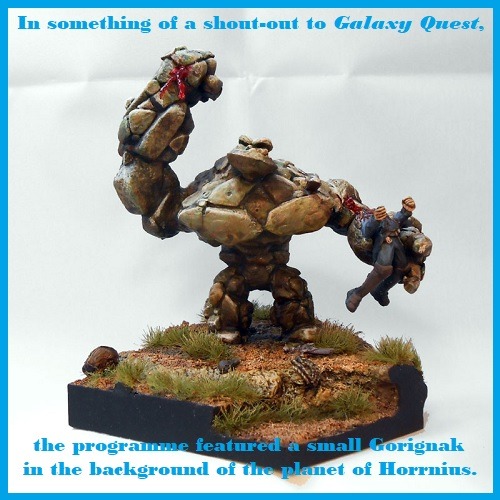
In something of a shout-out to Galaxy Quest,
the programme featured a small Gorignak in the background of the planet of Horrnius.
#Inspector Spacetime#Cute Is Evil (trope)#Cute Is Evil#Shout Out (trope)#Shout Out#Silicon Based Life (trope)#Silicon Based Life#Galaxy Quest (film)#Gorignak (species)#appeared in the background#rock monster#background character#planet of Horrnius#Horrnius (planet)
3 notes
·
View notes
Note
HI so there's this common trope? belief? both in sci fi and irl exobiology that goes along the lines of "if there are aliens with an advanced civilization, their math would be the same as our math as it would be based on the same principles of reality" that is very hard for me to wrap my head around. similar to the more basic "why must life be made of carbon? why not like, idk, silicone?" (which my understanding is that carbon is just the one that is easiest to find/recognize as life, not that scientists are unimaginative). anyway as a mathematician and person who works at [REDACTED idk if that's common knowledge around here] do you have any insights 🎤 why can't aliens interpret the principles of time and space with a different language than numbers? please my whole family is dying. ok bye <3
hi omg. excellent question. i have both good news and bad news! the good news is that you are far from the only person who feels ill at ease with the idea that mathematics is 100% innate / inherent-- the bad news is that, despite being a long-running debate within mathematics, we actually don't have a very satisfying or solid answer for whether math is discovered or invented. this link has like a brief explanation of the debate, i'm surprisingly kind of struggling to come up with good online sources for more info on this -- but this at least covers what the three basic attitudes on the matter are!
i honestly don't think i have any really solid insights into this one, because i can see merits to several arguments and sort of feel like the truth has GOT to be a mixture of things, but i'm also aware that's a non-answer. i'm going to say my gut instinct is that, because mathematics is so fundamental to the way we explain and understand the world around us, it's very challenging to imagine another framework for explaining and understanding the universe, but that does not necessarily mean that it really is innate / inherent imo.
it's been a while since i read it, but i actually want to recommend the sci-fi novel project hail mary, because i believe this comes up at least in passing, and in a way i seem to remember finding interesting! it's also surprisingly solid at depicting the minutiae of planning involved in the quest for scientific discovery / achievement, which is overall not so important to sci-fi but which i personally enjoyed reading :D
[also re: silicon!! i thiiiink the reason people ask this is because silicon can hypothetically form the same number of covalent bonds as carbon does, meaning it makes for a somewhat chemically similar base atom for life. i think whether or not it's worth searching for silicon-based life depends on what your views are on the origin of life in the universe & whether you believe it likely that silicon-based life forms have independently evolved -- my own instinct is that this isn't impossible, but if it's happened, it doesn't seem likely to be found within our solar system, so perhaps not worth investigating until we're less ass at interstellar travel T__T you're absolutely right that we have much more sophisticated / reliable means of looking for carbon in terms of scientific instrumentation, so far as i'm aware -- i'm actually not 100% sure if that's due to some inherent quality of carbon, or (far more likely) because of the heavy focus on carbon detection since that's the basis for life on earth. sorry this isn't actually related i just have more actual insight on this one ahgdsjsdg]
#asks#horreurscopes#honored to have been asked to weigh in on this thank you ;_;#i am actually not a mathematician unforchies but merely a Math Fan </3
8 notes
·
View notes
Text
The Tools Of The Omegaverse
This post summarizes and explains common tools people in omegaverse stories have developed to deal with the ramifications of their biology. Some are entirely fictional, while others are items that do exist in real life and have been repurposed. Not every story will have all of them available, but these all have widespread usage within the trope.
Alpha/Omega Perfume - Don't have a scent because you're a pup/beta? Don't like the one you have? Want to hide your identity? Want to attract alphas/omegas to you? Well, just spray on whatever scent you want, often including actual pheromones! Notably though, these fake scents are stagnant, so they won't change according to the users emotions, meaning the charade may fall apart once the desired partner is trying to get you off and there is no arousal to be smelled. Obviously, the scent will also fade with time and will need to be reapplied.
Collars - These have two main uses in omegaverse, though in both cases they're primarily worn by omegas. Collars can be worn by unmated omegas, especially in heat, to obstruct their mating gland, making it impossible for an alpha to mate them. On the other hand, they can be worn by mated omegas as a sign of the alpha's ownership of them.
Heat(/Rut) Inducing Drugs - While these can have medical uses or be taken willingly to synch cycles/have fun sexytimes/conceive, they usually are used to make an omega helpless and horny, enabling an alpha to take advantage of them. Which is why they mostly seem to exist to induce heats rather than ruts, though if modern medicine is available and you can make one, it's very likely you can make the other as well.
Heat/Rut Rooms/Hotels - Safe places for people to have their heat/rut outside of their own home, either in public locations like schools, or as a paid service. These usually serve as a solution for when a heat/rut hits unexpectedly and for whatever reason the omega/alpha can't go home. They're outfitted with basic nesting materials, often provide sex toys, as well as a bathroom, and they're usually sound- and scentproof.
Heat/Rut Suppressants - Generally assumed to be pills you can take that will stop you from going into heat/rut even when you otherwise would. They may not work indefinitely, with the heat/rut breaking through them at the worst time, or have side effects such as making the person taking them irritated or overly emotional, and often are unhealthy to take consistently, implying the body needs heats/ruts at least occasionally. While they usually are a product of modern medicine, they can be substituted with magic or oldtimey medicine such as chewing certain herbs.
Knot Dildos - If an omega goes into heat but doesn't want to/can't/isn't allowed to spend that heat with an alpha, they need to take care of themselves. While fingers and normal sex toys may still work, something that simulates a knot is often seen as the best one can do, though it never reaches quite the satisfaction an actual alpha can provide. The dildos are often still made out of silicone, with a base that can swell/inflate with a switch, sometimes having multiple settings for the knot size.
Muzzles - Just like a collar on an omega's neck, a muzzle can be worn by an alpha during their rut/an omega's heat, to enable them to have sex without mating when there's the worry the alpha can't/doesn't want to control themselves and will mate the omega otherwise.
Scent Blockers - Generally assumed to be pills you can take that will suppress your scent. It will make other people unable to discern a character's secondary gender, as well as any emotions their scent may have otherwise given away. Sometimes this will make them seem like a beta, other times it's obvious their scent has been blocked. The blockers will often fail if the scents get too strong, such as during heat/rut, or someone experiencing extreme emotions. They generally have few side effects, but may dull a scent (semi-)permanently if taken without pause.
Scent Patches - Literally small patches one can plaster over their scent glands like a band-aid, that will stop the scent from reaching other people. They usually lose their effectiveness over time and must be continually reapplied. They're sometimes required to be worn in modern societies where everyone is supposed to be equal, though usually only in select scenarios like job interviews or competitive sports.
Did I forget anything? Let me know!
3 notes
·
View notes
Text
Kamala Harris is a strong candidate, but we still need to help her stand tall
Kamala Harris’s life as vice president took a 180-degree turn in 24 hours: She went from stumping for President Joe Biden in Provincetown, an LGBTQ+ culture hub and haven, on Saturday, July 20 to becoming a potential presidential nominee on Sunday, July 21, when the news broke of Biden leaving the race. The crowd at the Biden Victory Fund event at the Pilgrim Monument and Provincetown Museum last Saturday showed their enthusiasm about a possible November win for the Biden-Harris ticket. As the keynote speaker, Harris was wildly welcomed to P-town with placards that read “VP-Town!” The entire Biden team at the event was on message — however, most attendees hoped Biden would exit the race. Related The Democrats are quickly unifying behind Kamala Harris as their presidential choice Democrats are quickly shaking off the paralysis of Biden’s failing campaign and getting excited about his VP’s chances. So when the news hit that Harris was now a potential presidential nominee for the head of the ticket, enthusiasm swelled. Both the Black and Asian American Caucuses immediately endorsed her. Within 30 minutes of her announcement, One Silicon Valley, a software engineering consulting firm, raised more than $1 million for her candidacy. Dive deeper every day Join our newsletter for thought-provoking commentary that goes beyond the surface of LGBTQ+ issues Subscribe to our Newsletter today Hours later, a national Zoom call from the D.C.-based Black women’s organization #WinWithBlackWomen — a national intergenerational and intersectional sisterhood of black diasporic women who leverage talent, influence, and networks to support Black women — had over 40,000 sistahs in attendance. In three hours, these women raised over $1 million to support Harris, which TV personality Star Jones, the campaign chair, spearheaded. It’s not easy being one of the first Black women running for president When I heard the news of Harris running for president, I immediately thought about how my deceased Brooklyn Congresswoman Shirley Chisholm would be proud of this moment. Chisholm was the first African American woman to campaign for the presidential nomination in 1972 on the Democratic ticket. A woman of temerity and integrity, her slogan was “Unbought and Unbossed.” Confronted with racist and sexist opposition, Chisholm lost the nomination. In 2024, similar concerns arise for Harris, too. When news broke that Kamala was in the race for the White House, Black Twitter was abuzz with exuberance and trepidation.” Much of Black Twitter is on board with Kamala as a candidate, but unsure if America feels the same way, the Black media outlet The Root reported. “Okay, so now it’s Kamala. Every white person who wanted him to drop out needs to figure out how to defend a Black woman in person and online for the first time in their lives. That’s the job now. I’d like to see it, but I never have,” comedian and podcaster Akilah Hughes wrote on Twitter. Okay so now it’s Kamala. I think—AGAIN—every white person who wanted him to drop out needs to figure out how to defend a Black woman in person and online for the first time in their lives. That’s the job now. I’d like to see it, but I never have. https://t.co/CMukwoDb2X— Akilah Hughes (@AkilahObviously) July 21, 2024 Prominent Democratic donor John Morgan of Florida emphatically stated he would not fundraise for Harris. “She would not be my first choice,” Morgan said in The Hill. “The donors holding the 90 million can release those funds in the morning. It’s all yours. You can keep my million. And good luck,” he continued. Striking the right balance with white Americans is difficult — for both Republican and Democrat politicians — in this polarized era, especially for a woman of color in power who identifies as black. The “angry black woman” trope hovers over all sisters of African descent. Harris is attacked for her laugh. She runs the risk of being perceived as too loud, too forceful, not knowing her… http://dlvr.it/TB2XRB
0 notes
Note
okay.. firstly hiii my love <333 congrats again you are amazing and sweet and smart and— and kiss me already 😙😙
for the match ups could i get one with any fandom? i love them all <33 okay my pronouns are she/her, i have no preferences so i'm okay with both boys or girls <33
i can be super clingy, really i always want to snuggle up and hug my friends.
if i had a s/o i'll defined would like to just netflix and chill, maybe watch a movie or play a videogame! also i think dates at the mall are super cute! just strolling around and going into shops, hand in hand...
my faves hobbies are drawing, writing and reading.
i love listening to new music and for some reason i'm obsessed with sad songs and spicy ones sksksjsjdj
i'm a big CRY BABY for real, i cry a lot for the smallest things in movies or edits 😩
i have big daddy issues akssjsd and i really want someone to take care of me 😭 (you can include nsfw baby <33)
i think that's all thank u so much for hosting this fun event ily mwah 😽 take care of yourself and don't get too overwhelmed okay?
hi baby!! yeah im kissing u so hard rn 👩❤️💋👩 also bc ur my mutual & friend i based the match up over that too hebdjdj i hope you like it!!

↬ your jujutsu kaisen matchup: kugisaki nobara !
↬ your fanfiction trope: slow burn & pining !
— headcanon: the two of you have been walking the very thin line between friends and more than friends for ages. it’s borderline painful. you’re constantly flirting with her, while she always quips back just as easy. neither of you really make a move for more, because while you yearn for it, it’s too risky, and it’s fine where you are now. you’re close, very close, with one another, confiding in each other, always enjoying one another’s company. she takes the leap though, eventually; in the heat of the moment, she says fuck all and kisses you. she kisses you so hard it knocks the breathe out of your lungs and makes you see stars. she’s terrified, deep down, but she wouldn’t be kugisaki nobara if she hadn’t taken that step. (she found that she had nothing to be scared of later).
trigger warning for below, mommy/daddy kink, sex toys
— nsfw headcanon: your sex life with nobara was interesting enough. she’s nobara, after all. interesting of course, but not necessarily kinky. it’s when she has you laying on your back, legs spread out for her, a thick silicone cock in her fist, pressing deep inside of you, that it slips out of your mouth. she hears it wrong at first, thinks it’s something else. her brow cocks curiously and she whimpers out mockingly, “mommy?” and twists the plastic cock within you, sinking it deeper and deeper inside of you. the action forces your hand to clamp over your mouth, your back arching deeply as you sob out the real title you used. “oh,” she gasps out, like she’s just discovered something phenomenal. “yeah, i’m your daddy,” she agrees, and leans down to kiss at your drooling cunt, with the most mischievous smile on her face.
26 notes
·
View notes
Text
My Top 10 Ships
I’m not a very romantic sort of guy, I’m not real forgiving to departures from canon, I get easily annoyed at inconsistencies, and I don’t watch much television and movies, so in order for me to ship something, it has to be a GOOD ship. I default toward rejecting ships, so to impress ME, it must be built on logic, and evidence, it’s gotta be something I can suspend my disbelief far enough to accept. And it’s gotta have story behind it, something deep, some hefty emotional weight; if it doesn’t tickle this man’s cold reptilian heart with strong beats and excellent writing, it goes straight to the trash. I absoLUTELY will not stand for any of these weird little cute, pretty, pandering, trashy crack ships that everybody seems to be clumsily throwing characters into. Most ships are trash ships. They are not good ships.
You think your ship is good? You like your ship?
You ship it?
No you don’t.
Get out of here.
You will listen to me. I will tell you. Look at me. I’m the Captain now.
Here are the 10 good ships.
10. The Rocinante, The Expanse

A resoundingly excellent ship. Unlike most ships you see out there, this thing was actually designed with realistic space combat in mind. It’s got 6 computer-controlled gatling turrets covering every angle, it accelerates in whatever direction it’s pointing, its bridge is right in the center to put as much armor as possible between enemies and crew, overall a much better-designed vehicle than most everything you see about.
That being said, I didn’t have much connection to this ship. Its crew weren’t really interesting, the aesthetic was kinda bleak, and I basically stopped watching after the phazon showed up. And the Rocinante itself has pretty poor redundancy. Enemy bullets can literally just pass through it (as is realistic for a ship this size) so how about multiple main engines huh? Absolutely tragic oversight. And its interior looks too much like an Apple product. How are you supposed to work on it? Where are the wires and pipes??? The handholds?????
9. Ares IV M.A.V., The Martian
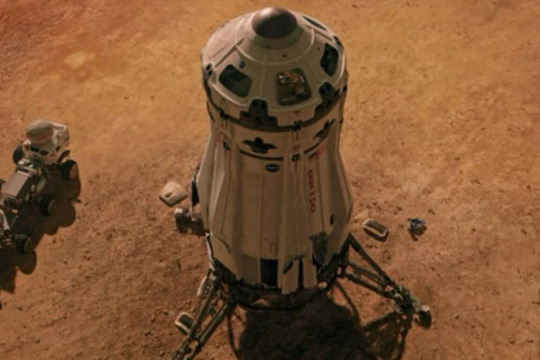
Almost more of a symbol than a ship. A symbol of freedom, of escape. A beautiful symbol. This is what Mark Watney spends the whole movie trying to reach, with an entire world backing him up, and an entire world trying to stop him. It’s the goal of the movie, and it just looks so beautiful when he finally reaches it and sees it sitting there in the middle of the desert, ass down, nose up; a tall, proud symbol. This ship has a special significance for me because the author of the original book really did his research on the scientific requirements and details of a Mars Ascent Vehicle, and it was actually inspired by the E.R.V. in another book, ‘A Case For Mars’, which I read when I was younger. “Makes its own methane-oxygen fuel on-site by using nuclear power to break down CO2 in the atmosphere and combining it with stored hydrogen, don’t you know.” I say as I adjust my spectacles and puff my pipe.
The M.A.V. in the movie does have a few issues, such as hallway and rooms running straight up through where the fuel tanks ought to be (instead of a lift/ladder on the exterior) and a rugged, industrial aesthetic that looks too heavy and cumbersome for a ship of its type. (And you’re seriously telling me he couldn’t have used the capsule’s RCS to literally bypass the movie’s entire climax? WHY NOT? The book never mentioned him having to drain the monopropellant!!!) But I’ll let that slide. Great movie.
8. Biggest Boy, The Greatship
(I don’t know the ship name so I had to make up a name. You know what, I think it’s actually just called the Greatship.)

So it’s a starship the size of Jupiter, empty, unmanned, perfectly mysterious, that comes gliding into the galaxy a couple million years into humanity’s future. Where did it come from? Who made it and how? Good questions. It’s powered by matter-antimatter annihilation reactions from within planet-sized internal tanks, and its engines use hydrogen and fusion exhaust as reaction mass, and its hull is made of hyperfiber, a super-strong fictional material with a 4-dimensional lattice structure, able to weather impacts by spreading them out over various dimensions where the impact occurred in a different place.
I hope that after the first few entries, you didn’t get the impression that I am somehow against futuristic, far-out, impossible technologies. Quite the opposite! I love me some hyperdrive and anti-gravity and A.I. and stuff. However! Ships must be well-designed for the technology available, and must take no creative liberties except those explicitly allowed by the difference in the setting. The laws of physics don’t disappear when the magic crystals come out, the magic crystals are merely a different tool to combat them. Engineering will always exist, should start with the tools and work outward, form follows function. Star Wars ships, for instance, are trash because they don’t mount their repulsorlift arrays consistently, they’re not aerodynamic, and their engines aren’t aligned around their center of masses.
So I like the Great Ship. Although the story is pretty far-fetched, and a lot of crazy, out-there scifi events transpire deep in the ship’s depths, the book always strictly kept its own rules in mind, and never broke those rules, no matter how outlandishly crazy things got. Thanks for comprehending something so incomprehensible, Robert Reed. You inspired me miles in my own work.
7. The Ghost, The Sea Wolf

The story may be fiction, but the Ghost was as real as ghosts can be.
Jack London did his research. No, not research, he LIVED this. The Ghost is a seal-hunting schooner much like one that he served aboard during his rollercoaster of a life, and he captured every detail of its operation, of its requirements, of its mechanics, and of the incredible toll it took on the people that lived such a life. The boat is made to feel as oppressive and claustrophobic as a prison, as if it were an extension of the monster that commanded it, directly in contrast to the expansive beauty of the sea around them. My goodness, what a beautiful book. What a moving, interesting, challenging book, with such a story! This book is one of the climaxes of fiction, and one of the inspirations for Shifting Sands, if I remember correctly. I would recommend this book to anybody. Beautiful.
6. Ferbnessa, Phineas and Ferb
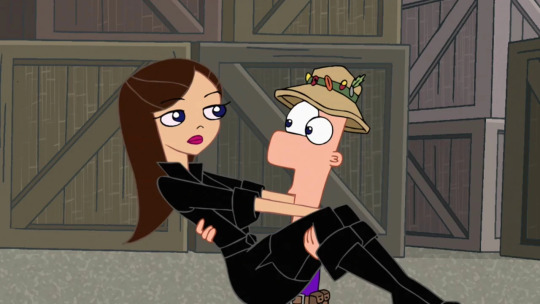
Okay, so I hope we can all agree that Vanessa is nothing but bad news. But that being said, Ferb knows exactly the relationship he wants, and by golly, he goes for it. Most male characters would stutter or get nervous or lose confidence around their crush, especially if that crush is about a hundred miles out of their league or if they already had another boyfriend, but Ferb? No. Not my man Ferb. He’s slighly too much of a legend to fall for such childish pitfalls. He doesn’t posture, he doesn’t creep or flirt or try to sabotage the other men in her life, he doesn’t even speak a word, he just maintains his blank expression, cranks his own already-inhuman levels of confidence and competence up through the roof to borderline olympian levels, and continues being himself. These rare moments of Ferbly passion are some of the few open windows we get into the grandiose machinations of his mysterious mind, and he uses it to bring out the best in Vanessa as well. And in the future episode, set years down the line, wouldn’t you know it, they’re a pair.
All joking aside though, this whole ship is basically comedy. It’s a super small part of the show, it’s only in like 5 episodes, it’s a running gag, it’s hilarious. It’s great. And it fits right into the tone and the feel of the show, because P&F’s entire world really is a comedy about going for it and living your dreams. So this is just the best thing ever. It’s been about a decade since then, and I still burst out laughing at how much of a pristine picture of ideal masculinity Ferb is. Become like Ferb, boys, and you will become men.
Legendary.
Eat your heart out, Dipper.
3. Shunk, Voltron
(I don’t know the ship name so I had to make up a name)
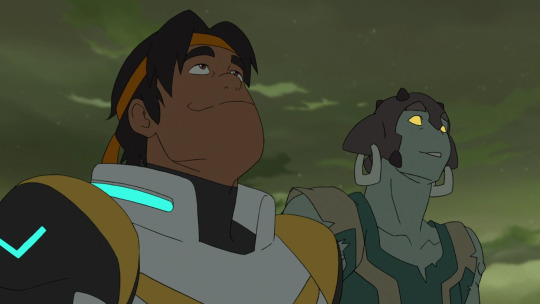
Huge props to the voltron team for making a female alien character (even a romantic interest) with NO BOOBS. Do you have ANY idea how sick and tired I am of artists throwing a big ol’ pair of balonkadongs onto lobsters and snakes when almost everything in the real world besides folks and cows have either 0 or 8+ of them? Everything’s gotta be traditionally sexy and recognizably-feminine and GREAT now you just canonized all the porn! Disgusteg
but now look at Shay. She’s a rock person. She’s got silicon-based biology, she probably weighs 500 lbs and bleeds sand. She’s got enormous hands and weird knees and no nose and lumps everywhere, AND YET STILL the show plays all the tropes 100% straight with her being a fair young maiden and a sweet princess. And it works because Hunk is just this great guy who’s exactly as sweet and caring, and he’s not the most attractive of the Paladins either, so he probably lives his life looking past appearances. He doesn’t care that she’s an alien rock, he cares about her as a person, and she obviously worships him right back. Even though Shay is shown in season 1 and then never again until season 7, Hunk still avoids alternative romantic entanglements, citing ‘a rock I know’, and it just adds to his persona as this infinitely loyal teddy bear. I tip my hat to this, the single ship I know that’s 0% sexy and 100% wholesome.
And Hunk is the best Paladin. He’s just the greatest. I revere him. I salute him as he walks past. This man among men. Look at this guy. I don’t even care about any of the other ships in Voltron (I mean, the Castle of Lions is okay, but it’s outriggers are kinda spindly) but Hunk and Shay deserve each other.
4. Wendip, Gravity Falls
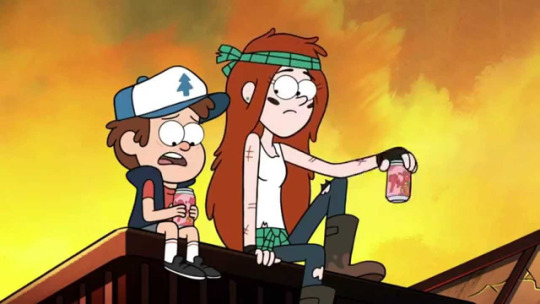
So Dipper’s 12/13, and Wendy’s 15. That’s a pretty giant age difference. Maybe you fans have fooled yourselves into thinking it’s not, but it is. She knows it. He knows it. His sister knows it. Your mom knows it. So halfway through the show, when he finally got around to confessing his feelings to her, she told him no. Sure they’re still friends, sure they like each other, and sure they have a lot of chemistry and they still have a movie night every Friday, but at the end of the day, he’s a smelly little midget who has to go back to California at the end of the Summer, and she’s a older girl with approximately zero romantic feelings for him. So the notion that it could work out is pretty obvious to everyone, and especially to him, pretty much hopeless. And he really did handle it all pretty poorly and immaturely too, he objectified her and stalked her and simped up a storm and sabotaged her boyfriend, so perhaps he deserved what he got. Perhaps it’s better this way.
And yet.
And yet Wendy never really got a happy ending in the show. And Dipper never got a conclusive romance either. So after everything, it’s easy to think about it how he thinks about it, by wondering how things could have been, if everything were just so slightly different, if she’d said yes or if they united again. She wishes she could be younger, he wishes he could be older. She’s more dominant, he’s more recessive. She has a lot of serious issues in her life, and could really seriously use a driven, heroic, intelligent friend to help her out, give her purpose, and steer her right. And Lord knows he could use somebody with street smarts and actual muscles to have his back now and again. They complement each other perfectly. They make up for each others’ weaknesses. They’re everything they ever wanted from another, and if you do the math, their children would be actual literal supersoldiers.
Or at least that’s the way a lot of people see it. There’s been immeasurable mountains of fanfiction and fanart from people who are just so sad that in a show full of happy endings and dreams coming true and old regrets being resolved and children growing up, that one ending would never be happy, one dream would never come to pass, one regret would stick with you forever, one child would never grow up. Maybe if you extrapolate out the story they’d end up together? Or maybe they’d find other, better partners? Maybe romance isn’t all that important in the grand scheme of things, and this is the best ending there could have been? Perhaps, perhaps not. But in any case, there’s a lot of very rich storytelling potential for the untold journey before them, and for the paths that could have been.
Stop drawing fetish art of Wendy, you insufferable heathen actual donkeys.
3. Kataang, Avatar: The Last Airbender
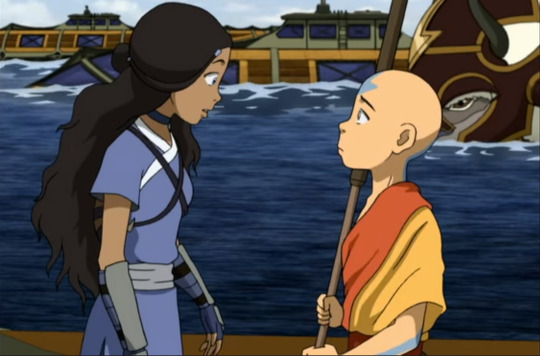
Now HERE’S a serious relationship. Not just a romantic ship, (though it is that,) not just some cutesy, funny thing or some ship-war fodder, (though it is cute and funny and did spawn a ship-war,) not just a matter of certainty and destiny, (though it is certain and was destined,) this is a real, TANGIBLE relationship, that these characters built together over a solid year of on-screen adventuring and fighting. They’ve helped each other through trauma, they’ve been there for each other in their darkest moments, they learned martial-arts together, they’ve fought back-to back against grown men, they’ve worked front-to-front sawing through steel girders, they’ve saved each other’s lives, he once ACTUALLY DIED and she brought him BACK. They end up respecting each other, and valuing each other in the intimate way that only true friends do.
And they’re shown working through all their imperfections and mistakes too. Aang sometimes oversteps boundaries and says stupid stuff because he’s a kid, and Katara sometimes scolds him and controls him because she’s motherly and orderly, they get jealous of each other, but none of those things drive them apart, and they deal with them, and they conquer them, and they keep a very legitimate and multi-faceted friendship going, and that’s the key to it all. The fact that this friendship becomes romance is just proof that it was a friendship of quality.
I think people tend to overlook or forget this ship because the last few episodes of the show found them in a pretty dark place, needing to deal with matters of life and death and justice in very different ways, and unlike all their other issues, we don’t really get to see them reconciling these differences before the story ends, which kind of leaves a sour taste between them. And Katara goes on a couple missions with Zuko around the same time, so now half of all people want Zutara, when in actuality, Zutara is a trash ship, which is a true science fact.
2. Serenity, Firefly
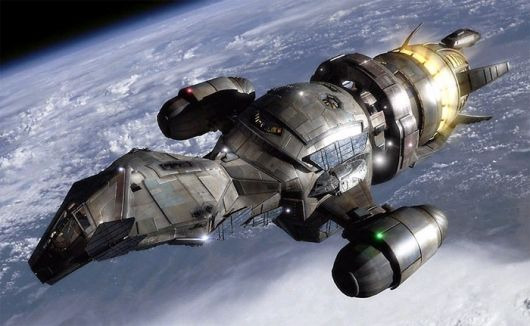
Only reason this ship isn’t #1 is because it isn’t constructed using a proper aerospace philosophy; it’s made of bulky machinery and steel beams and chunky plates, it looks more like an ocean vessel from the inside, and is WAY too big for its 6-12 person crew and light cargo capacity. Plus it doesn’t have any room for fuel and its got no wheels on its landing legs and no downward-facing windows and its reactor is just too dang SMOL and its engines are attached too flimsily. This all wouldn’t be too much of an issue if they were going for a far-future aesthetic, but if you’re trying to do something grounded and semi-contemporary, you need to lose some weight girl, I’m sorry.
But by gosh does it make up for it in heart. The entire inside of this ship was mapped out and made on set, with so many homely little decorations and touches to make every room feel like the person who inhabits it, sterile professional blue for the doc’s medbay, warm happy red for Kaylee’s engine room, all-serious-business-but-also-plastic-dinos for Wash’s cockpit... It hit me hard when this baby it crashed in the movie, and it felt almost real when River pretended to mind-meld with it. This ship has more soul in one buffer panel than most shows have in the entire cast, enough to make it seem like its own character, even in a show crowded with charming characters. I love this ship intimately, even if I would have built it differently.
1. Colonial Vessel 46.18′\, Gravity Falls
(I don’t know the ship name so I had to make up a name)
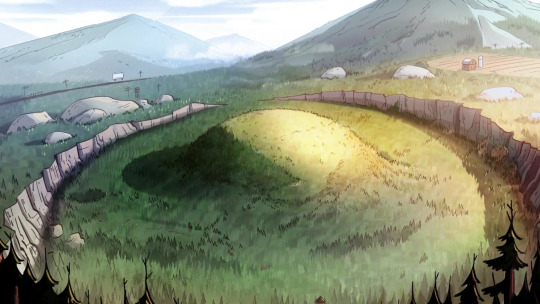
You didn’t think I’d leave out this one, did you? After all the fanfiction I’ve written? This is basically my ship at this point. Anyway, enough about me; the vessel beneath Crash Site Omega really is the quintessential alien ship; its perfectly cliche flying-saucer design taps into all the audience’s pre-existing fanciful notions and imaginings and disbelief-suspension, meanwhile its presentation isn’t cliche or fanciful in the slightest.
There’s not much to say about it from a technical standpoint, besides personal musings: it would need anti-gravity to stay airborne without thrusters, it would need a FTL drive to cross the distances it did, its drones would need to be made of some kind of semi-liquid to move like they do... But these sort of out-of-the-box, never-before-seen, world-expanding brain-knocks are exactly what makes this ship special. It’s an alien ship, built with technology unknown to people, forged from materials that people don’t possess, and inhabited by beings we will never meet. For all we know, this ship could be perfectly sound from an engineering standpoint, and no engineer in the audience could claim to prove it otherwise, because unlike something like the T.A.R.D.I.S., they never try and fail to explain it away with science buzzwords or canonize its details or show off some fancy glowy reactor. This ancient husk is left as a yawning pit in reason, and that’s beautiful.
Moreover, this ship is an amazingly powerful narrative tool, and a mind-blowing surprise to drop in as a setpiece during the show’s final episodes. This ship embodies everything that made the show’s mysteries special: the evidence presented so early and so consistently, the creativity in creature design, action, and worldbuilding, the yawning depths of unknowable lore, and most of all the burning, unquenched desire to know more... The imprint this ship made in the cliffs over the town has been hanging over the characters’ heads the entire series, and its hull was below their feet from day one, so when they finally revealed it, and explored it, it felt invigorating. Rewarding. This ship, and the glorious feelings and thoughts it represents, have inspired to no end, and haven’t ended yet.
Honorable mentions:
Westley and Buttercup, The Princess Bride
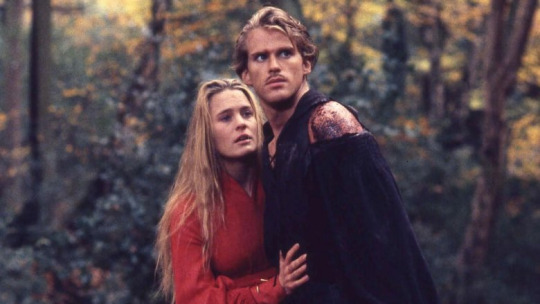
Ooooh man I tell you what, it was really hard trimming this down to 10 for the list, and this one just barely didn’t make the cut, and that mainly because I have a sweet spot for animation and for warrior women, and this sweetness ain’t animated, and this damsel is as distressed as they get. And they don’t have a whole lot of chemistry? I don’t know how to measure that, but I feel like there was a lot of friendship stated that was never shown? Is it sacrilege to say that about True Love? I guess I’ve never exactly had True Love, so what do I know?
The entire plot centers around his devotion to her, and her love for him, and the lengths they go to for one another. He studies fencing and wrestling and wits and tactics for years on a pirate ship as he tried to return to her, and she refused the advances and the offers of an actual prince for as long as she could, even though she thought him dead, and was ready to kill herself when she knew him to be alive and not to be hers. And just such excellent action and characters and humor and story in the entire book surrounding it. Possibly an even better movie, somehow. Happy happy happy happy. They don’t make movies like this no more, why is that? Sad.
Endurance, Interstellar

Actually a pretty realistic design, all considering. They nailed the aesthetic, and the cinematography, and the feel.
It does lose points though, firstly because the shuttlecraft require a booster stage to make it into orbit when leaving Earth, but for the rest of the movie, whenever they’re landing on planets with similar gravity and atmosphere, they can just fly away like it’s no big deal, which is a big inconsistency, both with real life, and more importantly with itself. And how did an under-equipped and struggling space program put this thing in orbit in the first place, anyway? And why don’t their ships land on their asses like proper rockets? And why not tell the crew members the full plan before leaving? See, it’s little things like that, little inconsistencies made for the sake of fitting with story beats and simplifying it for the audience’s sake, that sours this ship for me. I don’t mind creative liberties, but actual plot holes? This thing has a few plot holes, and plot holes are absolutely yucky. So although most of this ship is very yummy, the yucky parts make it all yucky.
Yucky.
Plus its heavy cargo shuttles are about the least-aerodynamic things imaginable, and that’s also yucky, and there’s porcelain tiles in the stasis bay, like what?
Couldashouldawoulda been yummy.
The Hermes, The Martian
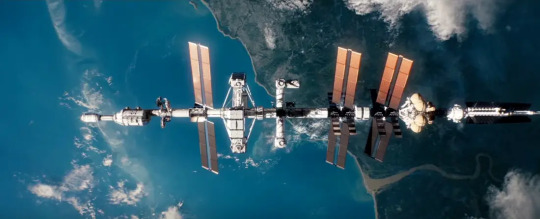
This ship. This friggin’ ship.
A beautiful ship. A well-conceived ship. A mathematically sound and engineered ship. It had so many many good ideas behind it. So much math went into calculating its thrust and orbital dynamics for this movie, so much work went into making it fit a contemporary space aesthetic, the panels, the heat sinks, the tanks, so much PRESENTATION I could KISS IT HMWA, but taken as a whole, engineering-wise, the whole ship falls flat on its face, because it just doesn’t fit together. It doesn’t make sense. Look at all those countless modules along its length. What do they do? They don’t do anything! It’s a quarter mile long, and it’s built for only 6 people? It’s meant to carry a lander? Where does the lander dock? Why are the useful airlocks so far off the center of gravity? Why does it have a cockpit? Why is the forward airlock so looooong? Why is the entire ship so loooooong? Why is the ring spinning so slowly? It’s not hard math to figure out how fast it needs to spin! You’re telling me you did ORBITAL DYNAMICS but not the SINGLE physics 101 equation needed to figure out how fast the ring needs to spin??
Btw, let’s talk about that rotating section in the middle! Think about the rotating section! That rotating section means that the front and the back of the ship aren’t actually connected! There’s just a pair of ring-shaped slip-slidey bearings bridging the ship’s middle, slip-slidey bearings that electricity, computer signals, and water and air pipes can’t cross. Why did they design it that way?? In the book the entire ship spun, which makes so much more sense! Why does it have solar panels when it has a reactor canonically capable of 40 times their output? Why are the fuel tanks so small? Why is it always facing prograde even when canonically burning retrograde? Why? WHY? BLRRRRGGGGGRGGGRGGG
In Conclusion, Ships Are Neat
#wendip#ferbnessa#kataang#shunk#gravity falls#expanse#the martian#interstellar#dipper pines#wendy corduroy#ferb fletcher#vanessa doofenshmirtz#avatar aang#katara#voltron#hunk#shay#the princess bride#serenity#firefly#what do I even put here there's so much
43 notes
·
View notes
Text
Shy girl - statement
Previous statement
For this class and second half of summer quarter I want to engage in a performance and dialog with female archetypes on the internet. I have always found the platform of internet a rather hostile black hole, yelling into the void so to speak. It also has been a place where I have discovered a lot of things that have helped me feel less isolated and have brought much inspiration to my life, a great outlet for my maximalist aesthetics. So, I have seen as someone growing up with the internet being around for the birth of Facebook and beginning my internet career on Myspace, that the internet is a place of duality. I haven’t much in my work engaged in a particularly feminist dialogue in my work as to not be pushed into a realm of all my work being an expression of the female but I guess I have still done so but not as overtly. I have also never explicitly created a character for myself during a performance as frankly I found it a bit to campy. I have created a persona based of a mash of a type of alternative female archetype that has found its place on the internet specifically, the E-girl. A popular and at the same time very much mi lined persona mainly a great target of specifically a lot of sexist vitriol from other online born groups.it is also a female persona that is much outside of my expression so I am interested in placing myself in the uncomfortable position in such a blatant misrepresentation of myself as well as having that character engage with some of the worst aspects of online culture and addressing that place and stereotype of woman in it. I am also interested in differences in male and female performance and tropes of expression and discourse found online mainly YouTube and other video formats. My character’s name will be named, shy girl and to further disguise is from myself I will be altering my own voice for speaking parts mush of the performances will be bringing more Avant-Garde concepts of performance to the mainstream such as john cages water performance with audience participation. Also, I want to produce short work more consistently which is a mode of work I have not done up to this point so I will be putting out longer video content once a week.
Add on:
To update my artist statement and to speak to my progress with subjects related to the creation of my alter though I’m not sure how much I want it to be viewed as persona but more of a way to remove myself. This alter , Shy girl, has so far no set type of format or type of content other than videos at this point and photos and maybe live capture online as I progress with platforms but that will very much change the nature of the performances as they will move from being captured into film , to being performance again the temporality will change as well as the source of control. which will affect the performances greatly but that will be addressed when the time comes, I think live streaming is a huge new question and place for performance art. Back from that side tracking so far in terms of subject my videos have in initial conceptions been touching on but not limited to, Para social relationships, hostile male communities such as Inscels, the gaze, make up beauty/ identity, Vtubers and anime subculture, the body, multiples and an exercise in thought on distance and new space relationships found in the online environment. There is much more intertwined with in all of the videos I have done up to this point but these are some of the starting points for my video concept drawings and shot lists which I will be posing. The biggest development of this alter has been my creation of not only a 3D model based on my outfit and make up created for my performance in my own body. But now also a 2D model, so at this point I have created this group of performers which has been an interesting way of layering levels of abstraction of the original persona created. My video “shy graces” was the first time we were all together as I have been working with green screen to place myself into my online gallery/performance space, though it has been a passing thought but definite one that being my irrelevance now that I have these digital avatars. Which leads to something I suspected might happen that being my own disenchantment with my body which in a way lead to the next video “skin study’s” based on the work of ana Mendieta “glass on face” and my own push to recess the nude and the body online. This video for the first time bought in anime references as well which I did so for the obvious reason that these alters made online where very influenced my anime culture and manga illustration. As a western fan and a reclusive member of the subculture I have always seen interesting territory for discussion about the role of women in the anime but also in the community, being as if suffers from much of many “nerd subcultures” suffer from, sexualization, fetish, nerd bro culture and so on. But in particular anime’s relationship to the female body and projection of female presenting people is rife with conceptual fodder that I couldn’t begin to pick at this is quite long but has been developing. But one of the biggest draws is anime has been the first to bring this type of idealized body and form they have created into a living space in the form of projected 3D models like that of the Vocaloid characters which were developed as mascots for products along with new figures like project melody on streaming cites as well her move into adult content as a Only fans personality, Adult subscription cite. There has even been the creation of objects of comfort mimicking a body in the form or body pillows, which I used in one of my “music cover” videos integrating my own limbs with this printed body. And the creation of silicon full dolls not always used for the purpose of being a sex toy but as recreation of characters from particular shows that people use for companionship not that there is not a sexual element at play. A lot of this rings true to what I think is happening online these things are rather inseparable as I have moved into looking into the Vtuber community for my models and “copies” which the collective element being that all the programs that I have seen or used all by default use this anime form and all Vtubers use this anime avatar weather that be the 3D models or the 2D models as I created mine from scratch based on my performance persona and examples of popular Vtuber forms. There is this whole new level to literally not only changing your persona online as most do but actually taking on a new form and based on anime which is about the creation of whole other reality’s and which has an element of as a lot of media, escapism. These works as of this past class have been as I have been speaking about very bodily and quite grotesque as is the history often is of female performance art which I had read of and reminded me of such in Vergine body as language which I will link. This writing hit many points in relation to my work and I think is a far better resistor of a lot of what is a part of my content currently. One of originators for these past few videos not only the most recent two skin studies and shy graces was when I published my 3D model on Vorid studios there was a pop up that askes you about the licensing the avatar and it asks who can use it but what most stuck out to me was it asked if the creator would allow sexual content or violent content which became a big influence on the tone of that video. As well the video “shy Graces” which addressed the fact to be able to inhabit my new bodies I needed to pay more money to be able to do something as simple as move the arms of my 3D model as you would need an add on called leap motion.my thoughts and conceptual development may seem rather scattered at the moments but much thought has go into them and as far as the writing about this work it will develop as the work has over time.
As for more technical aspects and materials, I have been pushing myself as far as the structure of my production of these videos as I want to make them all in accessible places with tools that anyone can access and I am trying to produce content weekly as on YouTube the speed of videos outputted is key to that structure and algorithm. The sets, outfits I have been using are also something that its easily accessed or recreated by anyone I guess I am focused on using almost modern-day working-class materials. As I should have started with saying at the beginning of this re brief this project at this point has not end game as it were I have the content that I am expressing as I want to use this avatar to engage with an audience that is outside of say a space in an art institution as I was inspired much by the work of fellow art student and internet artist molly soda. These alters and accounts have become my new studio work place for me to work on a continuous performance practice which is something I have not yet undertaken and I feel that will push my practice outside of my own comfort zone and open me to a space of pushing myself and very making mistakes and gaining new understanding to developed my practice.
Definition: Internet art (also known as net art) is a form of digital artwork distributed via the Internet. This form of art has circumvented the traditional dominance of the gallery and museum system, delivering aesthetic experiences via the Internet. In many cases, the viewer is drawn into some kind of interaction with the work of art. Artists working in this manner are sometimes referred to as net artists.
Net artist may use specific social or cultural internet traditions to produce their art outside of the technical structure of the internet. Internet art is often—but not always—interactive, participatory, and multimedia-based. Internet art can be used to spread a message, either political or social, using human interactions.
The term Internet art typically does not refer to art that has been simply digitized and uploaded to be viewable over the Internet, such as in an online gallery.[1] Rather, this genre relies intrinsically on the Internet to exist as a whole, taking advantage of such aspects as an interactive interface and connectivity to multiple social and economic cultures and micro-cultures, not only web-based works.
2 notes
·
View notes
Text
a trope in science fiction humor that I find...probably more annoying than I should is: an alien either silicon-based or composed of “pure light” or something to that effect referring to humans and carbon based lifeforms as “meat sacks”, “flesh bags” or something with similar connotations
as if silicon based life would have conceive of ‘flesh’ or ‘meat’ as something gross! as if their experience of disgust wouldn’t be calibrated to things that matter for a silicon body, and be fairly ambivalent to anything carbon based! as if a being of pure light would find our “meat sack” bodies more disturbing than the fact that we “pollute” are urban centers with electromagnetic radiation across a huge spread of frequencies!!!
#this is apropos of absolutely nothing#and kind of petty#I understand that I am ranting about what amounts to a genre of shitpost#still
147 notes
·
View notes
Text
Thelem-Ra and the Princesses of Power
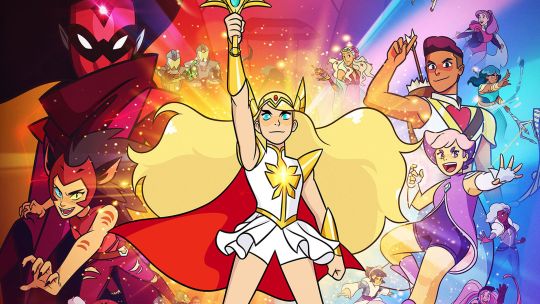
Due to strictly enforced gender norms, I wasn’t allowed to be obsessed with the original She-Ra cartoon. I could play with a friend’s sister’s She-Ra toy, but I never dared ask for my own.
That’s partly why Netflix’s remake She-Ra and the Princesses of Power means so much to me. Not only is it a version I can can openly discover and geek out over, but the characters’ wide range of age, gender expression and body type makes the fantasy realm of Etheria into a playground for the imagination -- one makes fans like me feel specifically included, even if it’s mainly aiming to entertain kids.
Any storytelling that draws from mystical currents will end up echoing familiar tropes and ideas from our own world. Attempts to portray existing magickal practices accurately almost always disappoint, as they did in Netflix’s other “princess of power” story, The Chilling Adventures of Sabrina (which is really entertaining nevertheless).
Isn’t it funny how the stories which offer up a wealth of artistic inspiration for magic often prove more durable than those depicting “real-life” magic use? The more abstract the characters’ powers are, the more possibilities we see in exploring them ourselves, and the more permission we feel to make something truly our own.
In the new She-Ra’s case (and in similar shows, like Steven Universe), magic is married to technology in a way that kids watching today will intrinsically understand, aligning neatly with post-modern chaos magick traditions.
In terms of old-school stuff, the Princesses’ magic is elemental in nature -- an expression of the soul of their homeworld, and a tool for regulating planetary harmony. The show departs from the classical elements of Earth, Air, Fire, Water, etc., which is fine, because their planet is not our planet, and its properties are still being revealed... to the characters, as well as to us.
But let’s not overlook that the very idea of “Princesses of Power” is old-school, and has a deep footprint in the history of tarot -- particularly the one crafted by the Dark Lord himself, Aleister Crowley.
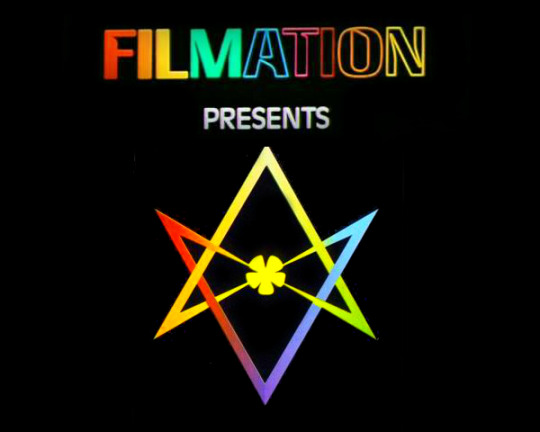
Before Crowley’s Thoth deck, the tarot’s court cards historically consisted of King, Queen, Knight, and Page -- a total sausage-fest, though Pamela Colman Smith brought out a wonderful androgyny in her illustration of the Pages (and in many of her deck’s other figures), which seems to even out the gender spectrum a bit, and is partly why the deck remains appealing to new users over a century later.
Conceived in the 1930s, Crowley’s court consists of a Knight, a Queen, a Prince, and a Princess. This “modern” twist must have seemed terribly progressive at the time, dethroning the King and elevating the court’s lowest ranking member (a page is just a humble servant of the royal court), consecrating that role as female.
You could write an entire book about the gender problems in Thelema (the religion founded by Crowley, which remains popular today). In fact, that book probably exists already, and contemporary Thelemites are continually exploring and re-examining the way our evolving social and scientific views of gender mesh with their religion’s core beliefs.
For now, all that’s important is that Crowley took a humble servant and elevated her to a PRINCESS OF POWER.

The four roles in the tarot’s court each correspond to a different classical element, the Page/Princess’s being Earth. And each of these four earthy figures is herself an expression of the classical elements: Fire of Earth (Wands), Water of Earth (Cups), Air of Earth (Swords), and Earth of Earth (Pentacles, or in Crowley’s case, Disks).
Exploring these cards in an earlier lesson, I wrote:
“The Page’s defining quality is not sex but immaturity, a word which inspires unnecessarily negative associations. Let’s not forget the raw potential we find in the young and/or untested, or the curiosity and vivacity they may bring to their work. As such, each of the four Pages represents a latent untamed force for change.”
What I love about Lady Frieda Harris’s illustrations in the Thoth deck is that the Princesses are all portrayed as doing something. These images could be pulled from the opening credits of She-Ra.
Think about that: she drew them as superheroes. The 1930s were the period when these kinds of heroes began to proliferate in comics, and Superman himself debuted in 1938 -- the same year Crowley and Harris began working on the Thoth deck.

Like She-Ra’s heroines, our tarot Princesses owe all their strength (as well as their weakness) to their signature elements, though in Crowley’s world there is a clear elemental hierarchy, due to spiritual ideas imparted by Western esotericism. As such, the Princess of Disks (Earth of Earth) sits at the bottom of the totem pole.
This kind of hierarchical thinking (and binary gender) is exactly what drives many people away from traditional forms of magick. I sympathize, and agree that we should never stop challenging these ideas.
However, what really we see in the Thoth deck is a setup for an archetypal story in which the low are made high; in which Princesses serve as the catalyst for changes that transform reality itself.
Just like Ace -- the lowest number in the minor arcana, but a symbol of tremendous power -- the Princess represents a place to build upward and outward from. Though she mirrors the queen in her gender, it’s the King/Knight she reflects in her agency and authority.
“The Princess is the throne of her Ace,” observes Thelemic teacher and author Lon Milo Duquette. In his book The Chicken Qabalah, he writes at length about the importance of Princesses: “They are positioned at the lowest end of our elemental universe, but they also embody the foundation of our universe.”
Awakening and exploring our Princess nature will gradually help us “escape the prison of matter” and “live in the bliss of the highest world.”
He even presents a diagram that shows how you can use the Princess and Ace-through-Ten cards to divide up the globe -- a handy tool for readings involving a geographical component.
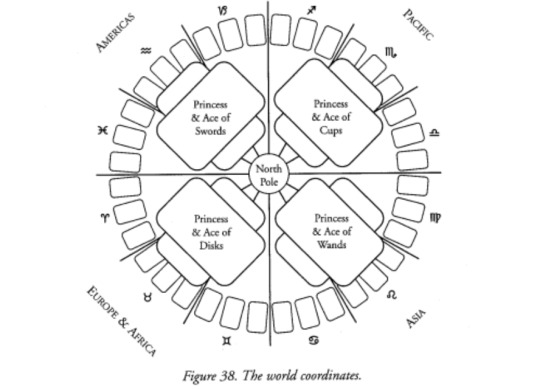
In the Netflix show, Adora is offered a very similar view of her world by First-Ones avatar Light Hope, who reveals how the Princesses -- each an expression of their respective element -- are all interconnected as regulators of Etheria’s holistic balance.

Of course, this is just an abstract diagram of Etheria’s actual geography. Entrapta’s model in the same scene shows that these centers of power are just as unevenly dispersed on Etheria as they are on our own planet.

Duquette’s book offers a qabalistic Creation myth based on these feudal archetypes, which may explain why royal figures still play such a prominent role in our storytelling.
“The you that you think is you is not you,” he explains. “It is a dream you. In fact, the you that you think is you is a dreamer inside a dreamer inside a dreamer inside a dreamer. You are the King of the universe, who has fallen asleep and is dreaming he is the Queen, who has fallen asleep and is dreaming she is the Prince, who has fallen asleep and is dreaming he is a sleeping princess.”
In Duquette’s fairytale of Creation, the Prince and Princess are twins birthed by the Queen -- different in sex, but alike in power. HELLO PEOPLE, this is the exact premise of the original She-Ra cartoon.

Within the new show, we see the struggle of a world straining to evolve in two opposing directions.
The Fright Zone is a technocratic military junta which only managed to come into power via political exploitation, capturing the Black Garnet runestone from the family of Scorpia, Etheria’s last “slumbering” princess.
One could compare the Fright Zone’s hierarchy to that of the classic Rider-Waite-Smith court cards, in which Hordak serves as King, Shadow Weaver as Lord, Force Captains are Knights, and all the the various wanna-be’s (including Adora and Catra in the first episode), servants, robots, and various scavengers remain in the Peasant class.
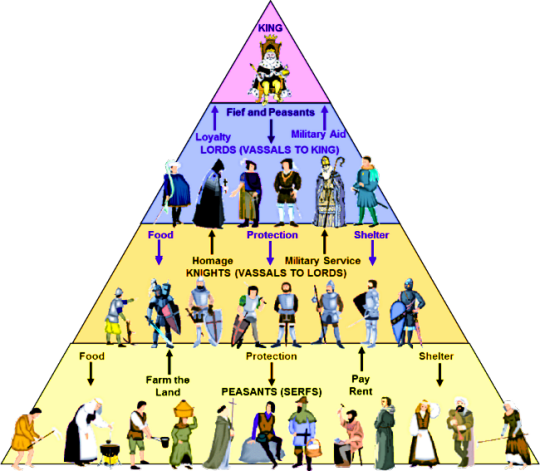
It’s not clear yet how the rest of Etheria is governed. It bucks this traditional structure, resulting in a lumpy sort of meritocracy in which those with the most magical power wield the most influence, but rulers are mainly tasked with maintaining harmony and protecting their subjects against external invasion. There’s evidence of a soldier class, but the “lowest” citizens we encounter are shown existing peacefully in (apparently) self-governing tribal cultures. They don’t serve the Princesses, they simply enjoy the freedom afforded to them by the Princesses’ rule. People live for love, for pleasure, for adventure, and/or the pursuit of intellectual aims.
(The only exception seems to be Entrapta, the Silicon Valley tech-bro stand-in who presides over her own servant class of attendants and robots. And it’s worth mentioning that she’s also the only Princess whose power isn’t anchored to an elemental source.)
In this sense, Etheria is an impressive embodiment of Thoth deck court structure, populated by Queens, industrious “princes” like Bow and SeaHawk, and true Princesses -- “Every man and every woman is a star,” with plenty of room to accommodate those who present neither as fully male or female, those with magical powers and those without.
But if you’ve already read this far, let’s take this one step even further and look at how SHE-RA IS ALSO A KNIGHT.
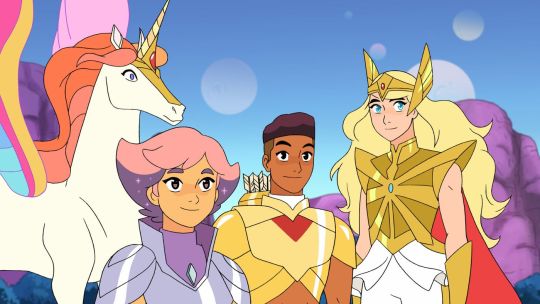
That’s right, you heard me: everything that Adora symbolizes as Princess, She-Ra articulates as a Knight. She even gets a horse! And a sword, and a shield! Note that Adora hasn’t really changed: she was a Knight in Hordak’s world also. She has simply relocated from one symbolic reality to another -- a more Thelemic one, in which Knights are kings. Thus, as She-Ra, she becomes Hordak’s symbolic equal.
And note that Noelle Stevenson’s re-imagining of the series is entitled “She-Ra and the Princesses of Power,” as opposed to the original title “She-Ra: Princess of Power.” She is of their ilk, but different. As Perfuma might say: “She is the She-Ra.”
Symbolically, Adora contains all the elemental potential of a Princess who must still evolve and struggle to awaken. She-Ra, however, is the elemental Fire that awaits on the other side -- the King who dreams he is a Queen, who dreams she is a Prince, who dreams he is a Princess. We know from Light Hope that She-Ra’s lineage extends thousands of years. She is not a person, she’s a function -- and that function is to protect Etheria by transforming reality.
In other words: Adora’s glorious transformation into She-Ra is a microcosm of Etheria’s transformation, which She-Ra herself was created to oversee.
youtube
In this way, the series bears the greatest resemblance to Alan Moore’s tremendous graphic novel Promethea, which tells the story of an ordinary young woman named Sophie who discovers she’s the latest incarnation of a mythical “science heroine” -- who may or may not have been created to usher in the Apocalypse. And she is guided in this process by other Prometheas, who represent an interesting range of ethnicities, body types, and genders.
Sophie’s exploration of her own newfound identity sends her on an odyssey that matches many beats in Adora’s. What are the limits of her new powers? How can she learn to transform at will? What dangers will this confer on her loved ones? Which parts of her belong to Sophie, and which to Promethea?
These are classic superhero problems, but Sophie’s quest is one that’s specifically designed to transform the reader as well: Moore has crafted a story that also serves as a primer for modern occult traditions, including tarot cards.

While Moore looks beyond Thelema, the works of Aleister Crowley remain a key influence -- the horny old magician even appears as a recurring character, in a handful of cheeky cameo roles.
Like She-Ra, Promethea points to the golden thread of continuity linking the individual and the divine. That’s a birthright that even the humblest, most overlooked person shares with the rest of humanity, but our world’s prevailing powers do everything they can to conceal that truth. Our own senses play tricks on us as well, supporting a view of the world in which we remain small and powerless, in which our lives, our suffering, our deaths, mean nothing.
The artists mentioned in this post -- Smith, Crowley, Duquette, Harris, Moore, Stevenson -- might not agree on everything, but they share the same quest: to awaken all these slumbering princesses. That includes you, dear reader. Wake up, your kingdom needs you!
Our language has another word for this sacred process: animation.
This is why you shouldn’t feel silly enjoying She-Ra or any other fantasy, at any age. This is why little girls shouldn’t be discouraged from play-acting as princesses (and neither should little boys). Society can only stand to improve from humans exploring their Princess powers. Many of these magical abilities will prove to be connected to life-saving (perhaps even civilization-saving) advantages further down the road. Magic is real, and we all stand to benefit from it.
“The clothes you're wearing, the room, the house, the city that you're in. Everything in it started out in the human imagination,” Moore writes in Promethea. “Your lives, your personalities, your whole world. All invented. All made up. All the wars, the romances. The masterpieces and the machines. And there's nothing here but a funny little twist of amino acids, playing a marvelous game of pretend.”
For the honor of Grayskull, it’s time to conduct yourself accordingly.

Have a tarot reading request or tarot-related question for Arcanalogue? Ask here. Tips accepted (but not required) via Venmo, @arcanalogue. Or support my Patreon? I’d love that.
158 notes
·
View notes
Text
Hi guys, I’m glad I came upon your blog. If you could give me some help in the right direction I’d really appreciate it. My idea is to have a planet [not our earth nor solar system, I need to create new ones to fit my story] devastated after a genocidal war and the end result is the bad guys completely defeated and the ones left over fled the planet. Now, the planet is pretty much ruined and sort of back in the Bronze Age with random bits and pieces left over of more modern stuff but anyone who can create more is basically gone so everything will have to be rediscovered and reinvented. But most importantly, the people that are left are from all over the world, hundreds of little tribes with as little as 1 to 2000 survivors with a total of a million population. They did get off world help to finally defeat the bad guys so there’s a further extra quarter million aliens staying behind to help rebuild the world. You’d think with aliens, they’d have technology? Nope. Everything is magic for them. So here’s a dilemma, use magic to rebuild the world or stay in the Bronze Age and rebuild with their own technology, that would take another thousands of years. People are divided or mixed. So we got a world that looks like a magical realm one town and the Bronze Age the next town over, and everything in between. End result is like I’m writing a fantasy story set in the Bronze Age but people have modern ideas and knowledge with no way to actually use them. They know what democracy is, the minority know they deserve rights and freedom. They can drive a car, they can use a computer, but those things are basically all destroyed and no one knows how to make them. So, any ideas on where I should do my research or problems the people will face, or perhaps similar stories I could draw inspiration/ideas from? Thank you!
Synth: For any computers they had, look into the worst-case projections from back in the 1990s when Y2K was becoming a looming concern, and for electric stuff in general check out what mega huge solar flares have the potential to do right now.
Saphira: The best thing about this scenario is that though the people are decimated and scattered, they have not lost their memories. This means anyone who had any training whatsoever still has it. Even better, literacy is still strong. They can still teach these things to their children and that is their greatest asset. What you have is not so much a race to resources, but a race to a Communal Knowledge, a Library of Letters.
What tradesman still live? How much do they understand the craft? How can one tradesman get help from another? How do we preserve what knowledge we still have before it fades? Sure we know what a pencil looks like, how it works. I can figure out a wood barrel, but I have no idea where to get graphite, or how to make rubber for an eraser. Maybe someone in the next tribe over might know. We can substitute graphite for charcoal for now, and send out a letter to every town nearby...
Most will not be tradesmen, I'm guessing. They can still read. They can still run. They might go about the destroyed world and look for scraps. Maybe a snapped motherboard. Maybe an entire gundam: who knows? Whatever they bring back, if it can jog the memory or provide insight, it has value. Look at how much we humans learn about our history and technology just by looking at old common tools and of all things the jars and plates.
Now not everyone will be so dedicated. Some will see the Arcane way of doing things that the Aliens provide, and think Well, why not? What if we simply cannot figure out some piece of advanced tech? Really hard to rebuild computers when you don't have a way to make silicon. Well, until we figure that out... Why not... Cheat? We'll uh, make it genuine later but for now we just need it to work...
I suggest try recreating something you have with household items. How would you recreate a doorknob? Yes, seemingly simple. Deceptively so. Take down what problems you face. Consider asking Google the same as asking the Arcane Aliens for help. What problems, what thoughts, what sort of experience is it?
Good luck.
Feral: The first thing that comes to mind is what's left?
People remember how to drive cars? Are there still cars hanging around? People who not only know how to drive but how to maintain and/or hotwire the left over vehicles may very well do so.
The same goes for any and all technology that people can get their hands on. For all of human history, we have re-purposed the cultural artifacts left by previous societies; why wouldn't your people?
In terms of why people might choose to go with the aliens or try it on their own is going to depend heavily on their access to clean water and food sources. A clean water source is paramount. And after a planet wide war, there might not be many water sources left that do not require filtration. Do the people have access to filtration technology? Or are their options alien magitech, war with a tribe that has filtration, or die from dehydration?
Constablewrites: From the related works to study angle, the Schizo Tech trope is probably a good place to start, since the order in which they revive given technologies is probably not going to be the same order in which they were originally developed.
Like a lot of After the End stories, a lot is going to depend on how long they've had to recover from all of this. Consider that if it's been more than a generation or two, a lot of the knowledge of how to use this stuff will die out just because there's not much point in passing it down anymore. Are parents going to teach their kids to drive once they can no longer make the cars function? There will still likely be records of this stuff and people who choose to study it, but the widespread practical knowledge and experience will die out as soon as the technology is no longer viable. Just look at how many people these days don't know how to sew their own clothes, which was considered an absolutely critical life skill less than 100 years ago.
Synth: The pro-alien-tech people clashing with the pro-DIY people seem like another potential source of conflict to help drive your story. Do the pro-tech people think the anti-tech people are stubborn and stupid for not wanting such easily accessed assistance? Do the anti folks think the pros are lazy for just accepting these handouts instead of working hard to do things themselves? Are there conspiracy theorists asking "But what are their real motives and goals?" about these aliens? Have people split themselves off into different groups/factions/entire separate settlements based on whether they embrace or shun the alien magitech? Which side do your main characters fall on, and what happens when they meet someone from or have to travel through an area populated by people from the opposing side? Hell, do all the members of your main gang of characters even share the same views regarding magic vs. going it (very) old school? What kinds of experiences might someone have that could change their mind about the alien magic? (e.g. someone against magic comes down with some horrible disease for which medications no longer exist, but can be cured pretty easily with magic. Does magic suddenly seem acceptable now that it's their life at stake, or will they go down with their principles? What about someone gung-ho about magic? What might make them decide "Actually how about No," and turn away from it?)
Tex: I wonder if those survivors communicated with each other - the survivors of zombie-style apocalypse/ELE (Extinction Level Event) in movies such as I Am Legend and Zombieland utilized ham radios and sent out distress signals and messages containing news about holdout locations where other survivors could travel to and be safe. Radios don't require a ton of materials or knowledge to build from scratch (Boy Scouts of America has kits for building a crystal radio), and they're relatively easy to learn how to use. If there's manuals around to build something, and someone deems it important, it's probably going to get built.
That being said, the first generation of survivors is integral for the rebuilding of society. If there was enough tech left over for survivors to leave the planet, did they do so without contacting those left behind? Was any technology repaired or retrofitted for other purposes? Does this planet have any sort of internet, or even libraries? What about fleeing survivors that pledged to come back after X amount of time or Y reason? Settling on a new planet is awfully similar to restructuring society after a devastating event, so the skill sets between the two activities have a lot of overlap.
Being able to flee the planet and presumably settle somewhere else implies that the people are capable of interplanetary travel, if not interstellar. If there's FTL drives, could these be used to power city grids, so as to take advantage of electricity, LANs, and digital information repositories? What about power supplies or engines in transportation vehicles? These can be retrofitted for use as generators, and if you're crafty enough, to boost the range of telecommunications equipment.
You only need less than a thousand people to start up a society, so having a million people, even disparate, means that the aggregate knowledge is much higher than would even be needed for colonizing a new planet from scratch. The fact that these aliens use magic isn't necessarily an issue - can they be convinced to move heavy objects, can their skills in magic be used to repair power lines or other things? What about using them to help find ore and mineral deposits to make the raw material for tech again? Are these aliens capable of scrying or telepathy, and would they be willing to create a pseudo-telecommunications net (think magic phone network where the aliens are the phone booths) across the planet to allow the different tribes to talk with each other and come up with some sort of plan? A division of labour to complete a task according to skill set can be complementary instead of contradictory, and would allow the planet to recuperate to its antebellum technological peak much faster, even if some people decide to go without it.
33 notes
·
View notes
Text
Oh we got the space worm (exegoth) lore in a book yesterday. And while yeah this is a common trope, for star wars specifically the explaination is hilarious.
Exegoths are silicon based life forms, so it's implied they eat useful minerals from space rocks. They're all part of an eons long realspace journey to the Deep Core. They're sapient and communicate with eachother through the Force using an aspect called the Hum.
So if exegoths eat inorganic matter, why did that one try to grab the Falcon? Well they also carry living beings inside themselves and creating microenviroments for them that last for generations. That's what the mynocks were. In fact, the Hoth asteroid belt was the site of an exegoth fuck party (which I think is meant to explain why it's so dense), and our exegoth had just been roasted for only having "butterflies" for the psychic show and tell. You ever wonder why the inside of the exegoth was pressurized? Well that's because it had changed the enviroment (probably using the Force) of its innards to accommodate Han, Leia, and Chewie. It was working on making the air breathable as well, when they escaped. This devastated our exegoth, who felt it had once again been rejected.
And that's star wars for you, solving plot holes with the most insane shit you can think of and making what's actually a very good story in the process.
The whole “how the hell does this predatory creature get enough sustenance” thing that plagues fantasy and sci-fi occasionally gets so absurd it loops around into being funny, like the scene in Star Wars when the Millenium Falcon is flying through an asteroid field and gets swallowed by a worm.
I could complain about that, but I could also conclude that the supply of reckless space pilots flying into asteroid fields has been consistent enough for the past few million years for animals to evolve to prey upon them.
#if i had a nickel for every time a creature from the movies was revealed to be sapitent and trying to help our hero#id have two nickels#which isnt a lot but its strange it happened twice
64K notes
·
View notes
Link
The real power of mass data collection lies in the hand-tailored algorithms capable of sifting, sorting and identifying patterns within the data itself. When enough information is collected over time, governments and corporations can use or abuse those patterns to predict future human behavior. Our data establishes a “pattern of life” from seemingly harmless digital residue like cellphone tower pings, credit card transactions and web browsing histories.
The consequences of our being subjected to constant algorithmic scrutiny are often unclear. For instance, artificial intelligence — Silicon Valley’s catchall term for deepthinking and deep-learning algorithms — is touted by tech companies as a path to the high-tech conveniences of the so-called internet of things. This includes digital home assistants, connected appliances and self-driving cars.
Simultaneously, algorithms are already analyzing social media habits, determining creditworthiness, deciding which job candidates get called in for an interview and judging whether criminal defendants should be released on bail. Other machine-learning systems use automated facial analysis to detect and track emotions, or claim the ability to predict whether someone will become a criminal based only on their facial features.
These systems leave no room for humanity, yet they define our daily lives. When I began rebuilding my life this summer, I painfully discovered that they have no time for people who have fallen off the grid — such nuance eludes them. I came out publicly as transgender and began hormone replacement therapy while in prison. When I was released, however, there was no quantifiable history of me existing as a transwoman. Credit and background checks automatically assumed I was committing fraud. My bank accounts were still under my old name, which legally no longer existed. For months I had to carry around a large folder containing my old ID and a copy of the court order declaring my name change. Even then, human clerks and bank tellers would sometimes see the discrepancy, shrug and say “the computer says no” while denying me access to my accounts.
Such programmatic, machine-driven thinking has become especially dangerous in the hands of governments and the police.
In recent years our military, law enforcement and intelligence agencies have merged in unexpected ways. They harvest more data than they can possibly manage, and wade through the quantifiable world side by side in vast, usually windowless buildings called fusion centers.
Such powerful new relationships have created a foundation for, and have breathed life into, a vast police and surveillance state. Advanced algorithms have made this possible on an unprecedented level. Relatively minor infractions, or “microcrimes,” can now be policed aggressively. And with national databases shared among governments and corporations, these minor incidents can follow you forever, even if the information is incorrect or lacking context.
At the same time, the United States military uses the metadata of countless communications for drone attacks, using pings emitted from cellphones to track and eliminate targets.
In literature and pop culture, concepts such as “thoughtcrime” and “precrime” have emerged out of dystopian fiction. They are used to restrict and punish anyone who is flagged by automated systems as a potential criminal or threat, even if a crime has yet to be committed. But this science fiction trope is quickly becoming reality. Predictive policing algorithms are already being used to create automated heat maps of future crimes, and like the “manual” policing that came before them, they overwhelmingly target poor and minority neighborhoods.
The world has become like an eerily banal dystopian novel. Things look the same on the surface, but they are not. With no apparent boundaries on how algorithms can use and abuse the data that’s being collected about us, the potential for it to control our lives is ever-growing.
Our drivers’ licenses, our keys, our debit and credit cards are all important parts of our lives. Even our social media accounts could soon become crucial components of being fully functional members of society. Now that we live in this world, we must figure out how to maintain our connection with society without surrendering to automated processes that we can neither see nor control.
1K notes
·
View notes
Text
Still Watching: A Love Letter to my Mom
The content below has not been censored for your consideration as neither the Real Housewives nor my mother would have approved of such blasphemy.
The decline in blogging was conveniently intentional.
There were other projects.
My career as a TV critic wasn’t exactly gaining steam.
My readership technically wasn’t booming.
For a time there had been an unmistakable fulfillment in my blogging habits.
Full disclosure: this work held undeniable titillation, provoked as it were by the vain echoes of my own subconscious. It was too enticing not to indulge the ego, booming, unselfconsciously through the page as I “eloquently” deciphered probable intentions of a writer’s room.
But was this self-aggrandizing, albeit surely intellectually stimulating task truly worthwhile?
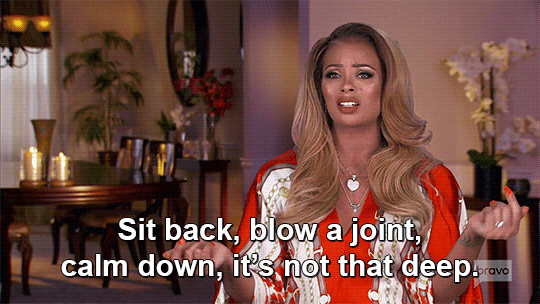
I kept falling back on this tricky notion of time management. Was taking copious amounts of notes regarding my viewing habits (a laborious task which required endless rewinds and thusly an inability to watch TV with others) coupled with the studious investment of actually researching and writing a cohesive piece which included a clear argument for television as a medium and thereby proving a consistent thesis, truly a valuable use of my time?
Not to mention, of course, the added effort of finagling my mother to invest her energies toward a strong copy-edit.
It was an investment, sure. But then again none of it was necessarily difficult at least in the classical sense of the word.
Actually, the engaging my mother bit was sort of easy. Not only was I skilled at the subtle art of stroking of her ego; “Your attention to detail is just so much better than mine. You are so smart…” I also possessed a valuable trump card which, admittedly, brought as much pleasure as my own voice: she actually liked my writing!
To have known my mother is to know what a huge compliment this fan-dom truly was.
My mother was proudly authentic. She had no shame over her inability to “fake it”.
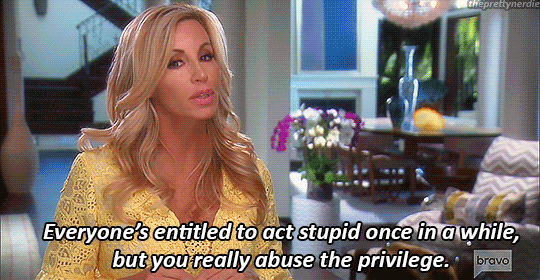
This personality trait demanded a certain dedication on her part. She was famous for telling my girlfriends they looked like sluts at our eighth-grade dance and embarrassing fits at the market while her younger children tried to disappear into the kid’s seat of the shopping cart. Patronizing eye rolls were par for the course. When a third grade Hebrew School teacher lauded my literary skills my loving, supportive mother made it abundantly clear she didn’t think I was a bad writer but maybe just too… precious?
Admittedly, poetry about attempted genocide from an eight-year-old may hold some tonal issues.
No matter, after 30 years of practice I had found my niche. I was everything she seemed to be looking for in a writer: I would rather drink turpentine than emote and I like really “got” satire. Finally, my words were funny and thusly, the woman who had helped foster this cynical humor had little trouble understanding my intentions.
We fell into lockstep. Her killer, critical eye and unparalleled editing skills were a welcomed privilege. I was no longer precious. A trait which carried over in my ability to “take a note.” I fully understood the value of a critical red pen from a grammar die-hard. Particularly one, who not only had a deep ceded appreciation for my style (she helped cultivate it, after all) but also a keen understanding of the objective, which only a mother could boast.
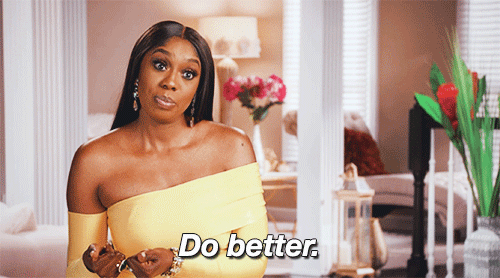
I was fully aware what a priceless service this was.
And so, I kept watching. My notetaking became obsessive. Whenever I pondered this expense of time, I considered the reality: rewriting dialogue was improving my own. I was becoming a better writer.
Since both my mother and I were committing countless hours to the free and underappreciated service of my viewing recommendations, it didn’t take long for the shows and topics I bothered dissecting to be unequivocally dictated by her unapologetic tastes. Or better stated, my own experience of such.
As an aside, I’d be remiss not to note that in losing both my parents it has become abundantly clear that one’s guardians (especially good ones) mostly exist in relation to ourselves and our already noted inflated egos.
Basically, the television I studied, the theories I pondered, the conclusions I drew had to appeal in large part to Dale Allen Boland. This was a nuanced role. An honest woman of remarkable talent she also happened to be the strict television gatekeeper of my childhood. Back in the 90’s a desire for this blue light pulsed through my veins like an addict in search of her next hit. I hadn’t been picky at all back then. This was a time in my life when even Jerry Springer reruns in black and white, streamed through bunny ears in my Jr. High weight room took the edge off.

To be frank, while at first her editing felt crucial so as not to embarrass myself on the interwebs it soon became clear that the bigger part of my ask was just any sort of consistent audience. In time it became obvious that my mother hadn’t only become a fan, but she was, in fact, my blog’s only fan.
And as any good writer knows, you gotta’ appeal to your base.
It helped, of course, that my mother had been my earliest educator (dictator) of media. The San Francisco Chronicle’s Datebook and the New Yorker were mainstays next to the can, meaning my earliest poos were made all the more pleasurable by the accompaniment of Adair Lara and John Carrol. By 34 I was not only well versed in what she found tolerable, but also possessed a keen understanding of how to stylize this appeal.
Simpsons? Yes. Danielle Steele? Not so much. Had she given Danielle an opportunity? Of course not! But I was willing to play her game.
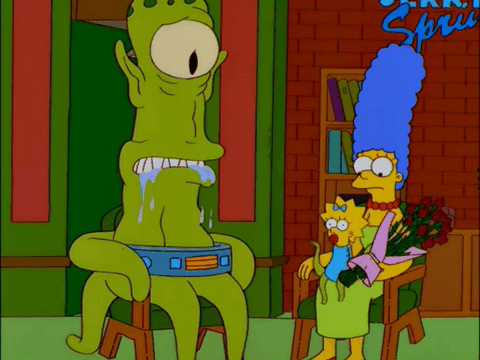
We both were expending a lot of energies at this point and since any real readership was in the slim to none margins it was crucial that we at least reward ourselves.
In retrospect I understand that this was actually how we enjoyed time together.
After she died my father noted that my mother and I had always shared a very special intellectual connection. A greater compliment than sharing a literary bond with Dale had never been given. In fact, in my father’s wake it is easy to see that this final gift from him may have been the most important. In saying so, he finally acknowledged what I’d always longed to hear. He respected, perhaps even envied not only my intelligence, but my mother’s too.
While I had given up on blogging years before their deaths, my diligent notetaking continued up until them. I accepted that my time critiquing television for free to a marginal audience had not been without purpose (though I missed the motive of the maternal connection it fostered until just now). I am well aware that through my efforts I had gained the confidence to write a novel. I understood that to maintain this skill set a continued attention to television’s minutia was critical.
But then, she died. Suddenly, grief allowed me space to achieve an entirely different and antithetical goal I’d set years earlier and had made no real efforts to achieve: to do less.
Finally I was able to let thoughts wave over me. I allowed flashes of “brilliance” to be fleeting. I relaxed into a space of agitated ease. I exclusively sought joy. In doing so I concurrently and without coincidence leaned into a brand of watching which had always been considered “just desserts.”
Bravo TV became a life raft. I watched Real Housewives and Summerhouse with a certain amused stillness I hadn’t exhibited since my complacent years as a co-ed.

The day following my mother’s memorial I listened to “Radio Andy” on Siris XM in a monotonous loop throughout the entire 6-hour drive home. I slept to Bravo podcasts. I read tweets from Bravo fan accounts during session breaks.
I noticed Bravo was keeping me smiling. The network and commentary was rewarding me with a source to which I could focus. I appreciated the humor.
Two months later my father died. Mind blank I leaned in harder to the quiet blankness this watching served.
But then, I noticed something.
Watching Kathryn Dennis of Southern Charm open a coke can with her teeth in a loudly expensive living room, next to her foam roller it occurred to me that these women were the antithesis of my own mother.
Vicky Gunvalson whooping it up at a classy resort represented everything my mother had no tolerance for.

To see these women as satirical requires a certain level of empathy for their antics that would have eluded Dale.
Their bad behavior was just too black and white. For my mom there would have been nothing charmingly relatable about a woman like Lisa Barlow of Salt Lake City, placatingly sipping a constant stream of fountain soda through a plastic straw while proudly bragging she wasn’t “like a regular mom,” proving this factoid by feeding her children drive through fast-food for every meal and ignoring their calls when she was at a party.
These are women that bat fake eyelashes and scream at each other through plastic pumped lips. They float effortlessly in azul pools in Mexico boosted by the silicone in their tits.
My mom also wasn’t a regular mom but she wouldn’t have found this indulgent brand of opulence at all inspirational, aspirational or relatable. She did not identify as a “powerhouse” or a woman who needed to tell other women that she “lifted up other women” over an expensive cocktail brunch with “40 of her closest girlfriends” all of whom wielded designer purses like coats of armor.
This trope, repeated often throughout every Housewives franchise for the past 20 years would have just pissed my mother off.
It’s not that she didn’t relate to women behaving badly this just wasn’t her brand of bad behavior. She maybe could have sympathized if they’d been wearing Walmart rather than Prada.
Lorelai Gilmore? Sure, why not? Emily Gilmore? Definitely not.
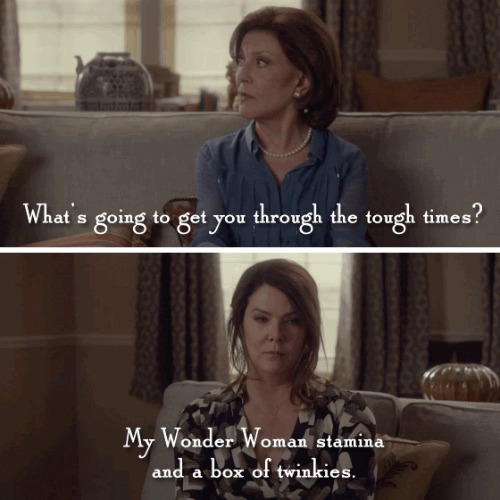
It’s funny because in a certain sense my mother’s proud authenticity and lack of shame in her outbursts would have made her an ideal housewife. But the weight these women put on things and beauty would have been too damn distracting to her.
In spite of being a woman whose love language was often a good screaming match she would have found any and all of the dramatic fights on Housewives absolutely insufferable.
And in spite of my deep love for the genre, convincing Dale that any of this was actually satire worth watching would have been an exercise in futility.
I embraced this factoid quietly and with little work on my end (other than setting the DVR to catch up on back seasons of Atlanta) I leaned into a space which never would have been tolerated.
It felt good.
It was my own.
In doing so, I came up with a million things about Bravo to share. Perhaps one day I will. God knows I need to create a new fan base.
But before I could even consider either changing the channel or sitting down to a blog analyzing how one housewife’s ludicrous and racist notion that eating chicken feet was somehow any different than eating chicken nuggets, I got this text from my mom’s best friend: “have you seen Derry Girls.”
Maybe an audience was asking for a resurrection, after all.
But as I flipped to Netflix and started a new note labeled “Derry Girls” it occurred to me that I first must come to terms with how much things have changed.

There is a certain level of self-actualization left amidst the cluttered grief of losing my parents. As I write this, I am continuously tempted to take a break for “Mom’s consideration”. Her feedback would have supplied an unrequited serotonin boost, like a gentle promise to my oh so evasive ego that there was purpose in my efforts, that the writing I was doing was valuable. When my mom was alive I always knew that someone would appreciate my continued efforts, making it tolerable to finish, and tidy, and publish. My mother was like a promise that not only my words but also I myself was worthwhile.
This chore of loving, maternal reassurance is, of course, now my own. A truth my mother, who never needed to brag about lifting up other women, would have celebrated.
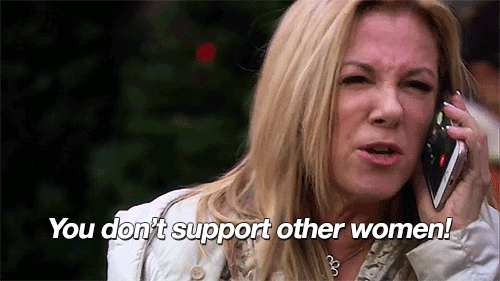
Nothing would have made my mom happier than me making my own choices, editing my own words and being my own cheerleader Perhaps she died just to prove it. To know Dale Allen Boland is to suspend belief that she maybe could have made her last stubborn point through such dramatic means.
And to be totally frank; that is a storyline not even a housewife could pull off.
Thank you for being my greatest cheerleader. I love you Mom.
1 note
·
View note
Text
The 2017 Binges you absolutely have to do before 2018

"The Golden Age of Television". That's a saying you've most likely heard as a description of the current state of TV. It has been used from everyone from TV and Studio executives to that your one friend who won't shut up about how great Master of None is. Whatever your feelings about the term, one thing is for certain, there are more quality shows being produced at an almost daily basis than ever before. So many that it seems impossible to follow the TV landscape while, you know, having a life.
That's why I'm here. I've given up my real life so that you can have one and still watch the best TV. You're welcome. Whether it's your FOMO on all the great TV topics or you're just looking for an easy binge for the Christmas break, I’m going to try and provide adequate suggestions to satiate everyone.
The Weekend binges
Mindhunter (Netflix)
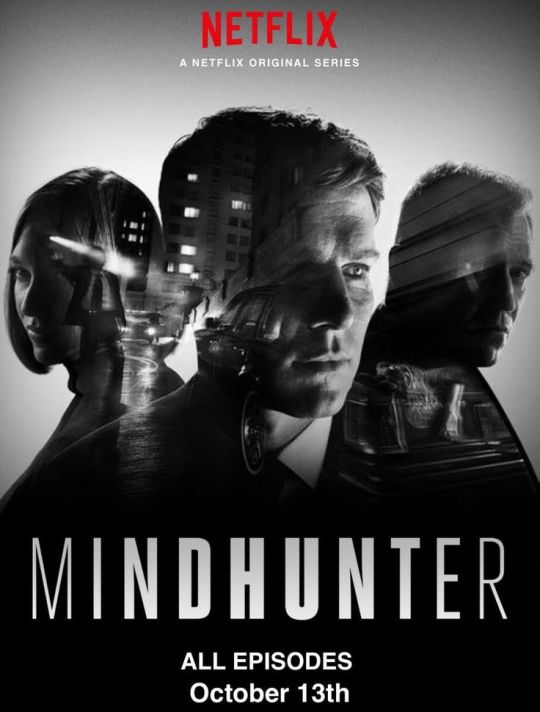
David Fincher's return to Netflix! This show is based on a book by John E. Douglas, a former FBI special agent and a pioneer in criminal profiling in the FBI’s Behavioural Science Unit.
While the protagonists are fictionalised versions of the actual people, the real attraction of the series lies with serial killers and their interviews with the FBI. The criminals do maintain their real names and are depicted to a chillingly high degree of accuracy, in some cases even lifting actual dialogue from the real life interviews.
A terrific examination of the criminal psyche (a feat David Fincher has shown to be a master at), Mindhunter will have you hooked from the first episode.
youtube
You’ll like this if you liked: Zodiac (2007 film), Hannibal, Dexter (probably).
Ozark (Netflix)

Although dealing with a fairly well trodden premise, Ozark manages to elevate itself from the constraints of its premise and deliver an entertaining, gripping season.
There is no mistake though, this is Jason Bateman’s show to shine and shine he does. Wearing multiple hats as star, producer and director of 4 episodes (probably the show’s best episodes), Jason Bateman delivers a complex and entertaining performance as Marty Byrde, a money launderer for a crime syndicate who is forced to uproot his family and move to the Ozarks in order to pay back a debt to the syndicate.
You might believe you know all the tropes of this sub-genre but Ozark has a few surprises waiting for you.
youtube
You'll like this if you liked: Bloodline, Breaking Bad.
The Niche binges
I believe everyone should love a great dick joke. A perfectly crafted and executed dick joke can be side splittingly funny as is evidenced by the fact that Silicon Valley’s season one's “optimal tip to tip efficiency" joke has seemed to take on a life of its own even spawning research papers with actual Stanford approved maths. I however concede that not everyone is as sophisticated as me, which is why I have put these 2 shows in the “niche” category.
American Vandal (Netflix)
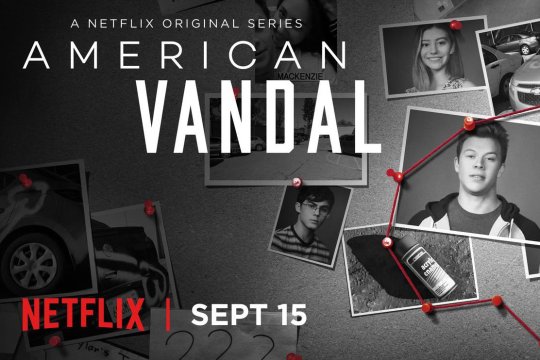
American Vandal is really just an almost 5 hour dick joke at its core. It takes a simple, quite ridiculous, premise- someone spray paints 27 dicks on teachers’ cars in the school parking lot and the accused student is expelled. It is a true crime mockumentary but it doesn’t seek to discredit the genre but rather as all great satire does, it pays it homage.
The characters and the show approach this premise with such straight faced seriousness and investigative attitude that it makes the jokes that much more hilarious. Special mention should be given to Jimmy Tatro whose performance drives the show and who turns the “YouTube douche” personality into an art form.
I did find that, beneath all the dick references, well over 1,000 (both visual and verbal), American Vandal tries to say something and if you pause long enough from laughing and figuring out “Who drew the dicks?” you might just hear it.
youtube
You'll like this if you liked: 7 Days in Hell, Documentary Now!, Making a Murderer (but yearned for something less deep).
Big Mouth (Netflix)

Following the success of the Simpsons, animation quickly became the go to medium for telling deeply perverse and hilarious stories that could never be written for and performed by real people. But the real successes came in the episodes of Simpsons, South Park, Family Guy etc that transcended their "cartoons tell dirty jokes" gimmick and showed some heart and deft in their storytelling. Big Mouth has lots of heart.
With a stellar voice cast which includes co-creator Nick Kroll. John Mulaney, Jordan Peele, Maya Rudolph and Jason Mantzoukas, Big Mouth manages to tell an insightful, universal coming of age, puberty story while also juggling the fact that two of its main cast are "Hormone Monsters" and it has the ghost of Duke Ellington living in a character's attic. (The show is weird, guys)
You'll like this if you liked: Family Guy (the earlier years) and basically any other R-Rated animated comedy.
Trailer
The Snowed-in and cuddle binges
Dear White People (Netflix)

I am a sucker for a good story by and about black people. If such a show manages to deftly attack systemic racism then I'm fully sold. Dear White People however, is more than a guns-blazing attack on racial injustice. Sure, that's the premise by which it starts but as it evolves it begins to say something more on identity, especially Black Identity and all that term entails.
Based on his critically acclaimed film of the same name, Justin Simien manages to improve on his original work in possible every imaginable way. It follows a group of black students at a predominantly white University, as they attempt to negotiate the racial politics and come to terms with their own identities.
You'll like this if you liked: Black-ish and Dear White People (2014 film).
Trailer
The Bold Type (Freeform)
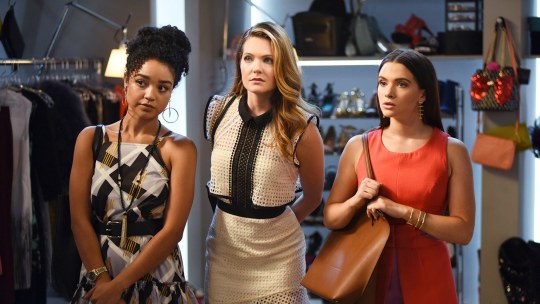
It is no secret that there is a paucity of stories about and driven by female characters and what is even rarer are stories that explore female relationships, especially friendships amongst the younger demographic. Insecure and Jane the Virgin have told some of these stories during their runs and The Bold Type did it incredibly well, under the radar, in 2017.
Through Scarlet, the Teen-vogue like magazine where the protagonists work, The Bold Type manages to address relevant societal issues such as politics, rape, religion and professional ambition while maintaining a "summer-y binge feel to it".
You'll like this if you liked: Ugly Betty, The Devil Wears Prada (2006 film).
Trailer
The Good Fight (CBS All Access)

First of all, for any The Good Wife fan who hasn't seen this already, shame on you. For any non-Good Wife fans though, do not be deterred by the Good Wife link because this show more than ably stands on its own.
Set a year after the finale of TGW, The Good Fight follows the great Diane Lockhart after a financial scam causes her to lose all her savings and she is forced out of her firm. She then joins an all-black law firm that already includes The Good Wife fan favourite Luca Quinn. Rounding off the cast are Sarah Stele (returning as another fan-favourite Marissa Gold), Delroy Lindo, Justin Bartha and Game of Thrones' Rose Leslie.
For Good Wife fans, you don't know how satisfying it is to hear Diane yell "Fuck" until you actually do.
You'll like this if you liked: The Good Wife or any other great legal drama.
Trailer
Obligatory Superhero binge
Legion (FX)
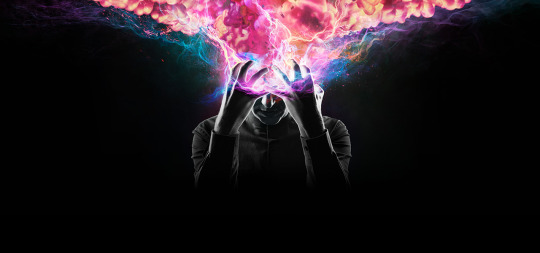
In a year where Superhero TV was littered with messy newcomers such as Iron Fist and Inhumans, Legion was such a breath of fresh air. Rising above the genre of "Superhero TV", it was in my opinion, one of the best new shows of the year.
Noah Hawley (creator of Fargo) examines what would happen if instead of being enlightened as to his mutant powers, a very powerful mutant was diagnosed as having schizophrenia. Legion is the son of Professor Xavier in the comics and excluding a few easter eggs and nods, that is where this show's link to the wider X-men universe ends. It is a show that stands on its own and does not require knowledge of the wider X-men mythology to be enjoyed.
Legion and Noah Hawley are much more interested in diving into an examination of mental illness and the various stereotypes surrounding it than they are in fighting a "big bad". It is a very trippy, colourful and awe-inspiring piece of television that is evident right from its excellent pilot. The performances of Aubrey Plaza and Dan Stevens manage to shine through from a group of wonderful performances.
youtube
Top Picks
There are few things more satisfying to me than a perfectly told, timely story of import. Unfortunately, in the mad dash to tell an "important" story, especially on cable television, good storytelling has often been pushed aside for either pretension or just sloppy work. Their ability to buck this trend was one of the many refreshing things about Big Little Lies and The Handmaid's Tale.
Big Little Lies (HBO)
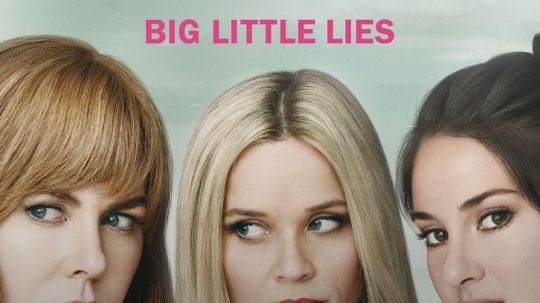
The immediate draw to this series (for the non-book readers) is undoubtedly the cast. This highly stacked cast includes the likes of Nicole Kidman, Reese Witherspoon, Shailene Woodley, Laura Dern, Zoë Kravitz, Alexander Skarsgård and Adam Scott, but once the novelty of the cast wears off, the strength of the story will keep you hooked.
Big Little Lies is a wonderfully well written, directed and acted piece of television that approaches some very heavy and important topics with a delightfully nuanced touch. It says a lot to the strength of the several stories told that the murder mystery at the center of the show, while intriguing in its own right, quickly fades into the background. To give any more details would be to spoil what is a very well done show.
Trailer
The Handmaid's Tale (Hulu)

In The Handmaid's Tale's world, fertility rates have plummeted to almost non-existent numbers. This has resulted in the fertile women being kept as personal breeding grounds for the more affluent member of the cult-like organisation that has taken over society.
The Handmaid's Tale holds many mirrors to our current society but perhaps none is more chilling than the straight path that can be drawn from 45's current America to the "dystopian" society predicted in this 1985(!) novel.
The Handmaid's Tale is built on the Emmy-winning performance of Elisabeth Moss and firmly stands as my best show of 2017 and a definite must watch.
youtube
Bankole Imoukhuede
@banky_I
#tv shows#binge watching#netflix#the handmaids tale#big little lies#legion#the good fight#the bold type#tv#recommendations
14 notes
·
View notes
Text
What Michael Moore’s new film gets wrong about renewable energy
In the film Planet of the Humans, producer and director Jeff Gibbs and executive producer Michael Moore take aim at renewable energy technologies and the environmental organizations such as 350.org and the Sierra Club that promote them. The film’s premise is that green tech is not so green and that turning to this technology as a cure for climate change would be worse than the disease.
Scientists and environmental activists have already disputed many of the assertions in the movie, which was released on YouTube on April 21. One commonly cited problem is that the film’s renewable energy claims are often a decade out of date — ancient in green tech years — and misleading. Here’s a closer look at five of those claims.
Making solar cells is not environmentally friendly.
As the film notes, traditional photovoltaic solar cells are made with high-grade, extremely pure silicon, gleaned from quartz mined from mountains and then melted at very, very high temperatures. That takes a lot of energy, which may be generated from coal or other fossil fuels, therefore releasing climate-warming carbon emissions (SN: 2/27/08).
Solar cell manufacturing also creates environmentally harmful by-products, such as liquid silicon tetrachloride. Tetrachloride can be recycled, but if released into the environment, it can react with water to form hydrochloric acid. However, researchers are investigating alternatives to using chlorine-based compounds during manufacturing, which would eliminate tetrachloride as a by-product.
Meanwhile, solar cell technology is advancing rapidly. Thin-film solar cells involve layers of light-absorbing semiconductors such as cadmium telluride or copper indium gallium selenide that are deposited on glass, metal or plastic. This technology uses only a fraction of the silicon needed to make the thick silicon wafers of a standard photovoltaic cell. Thin-film cells also eliminate the use of dangerous hydrofluoric acid to clean the wafers.
Although industry uses some thin-film cells, they are generally too pricey to be appealing for widespread use. But there’s a promising thin-film prospect on the horizon, which uses a coating of a light-absorbing material called perovskite (SN: 7/26/17). As Nature reported in 2019, right now the race is on to make perovskite solar cells cheap enough to be commercially viable.
Solar cells are really inefficient.
In one memorable scene, Gibbs visits the Cedar Street Solar Array in Lansing, Mich. A representative from the Lansing Board of Water and Light tells him that the array’s solar cells have less than 8 percent efficiency (the amount of generated energy relative to the incoming solar energy). The utility has roughly 800 solar panels in the array, which can power maybe 10 houses for a year, he says.
That plant, however, was installed in 2008, which is multiple generations ago in solar cell technology time. Efficiencies for standard photovoltaics are much higher now, hovering close to 20 percent. Perovskite solar cells push that efficiency even higher, up to 25 percent. And by creating “tandem” solar cells that layer perovskite on top of silicon, manufacturers can maximize the ability of the cells to absorb light in different parts of the spectrum, increasing the efficiency still further.

Planet of the Humans questions the value of renewable energy technologies, suggesting that, for example, manufacturing the solar cells for a power plant releases more fossil fuel emissions than the plant’s carbon-free solar power would save.LeoPatrizi/E+/Getty Images
Solar cells and wind turbines have such short life spans that manufacturing replacements uses up more fossil fuels than the renewable energies save.
Planet of the Humans suggests that the carbon emissions released from the energy involved in manufacturing new parts and machinery for wind and solar power are greater than any saved emissions from the facilities. “You use more fossil fuels to do this than you’re getting benefit from it,” says Ozzie Zehner, one of the movie’s producers. “You would have been better off burning the fossil fuels in the first place instead of playing pretend.”
But that statement isn’t supported by data. For example, the film claims that “some solar panels” last only 10 years, but today’s solar panels are built to last 20 to 30 years. Similarly, wind turbines have a life span of about 20 to 25 years, according to the U.S. Energy Information Administration.
A 2017 study in Nature Energy reported that the lifetime carbon footprints of solar, wind and nuclear energy power plants are just a fraction of the lifetime footprints of coal and natural gas plants. The study also projects that, in 2050, the energy involved in constructing and operating a solar or wind power plant will be just 3 to 8 percent of its electricity output.
Solar and wind power are too intermittent to ever fully replace fossil fuels.
The question of storing energy generated by renewables so it’s available when the sun isn’t shining or the wind isn’t blowing has dogged renewables for decades (SN: 1/9/17). But battery storage does exist: Some renewable companies use lithium-ion batteries, for example (SN: 5/7/19). And renewable energy utilities in the United States, Australia, Germany, Japan and elsewhere use battery storage systems, though so far they are primarily for short-term storage, amounting to a few hours.
In the film, Gibbs suggests that battery storage capacity — how much energy the batteries can store — is the main obstacle to updating the traditional energy grid. He shows a pie chart apparently based on data from the Paris-based International Energy Agency, which he says shows that current total battery storage capacity is 51 trillion British thermal units. That’s “less than one-tenth of 1 percent of what’s needed” for a year’s worth of energy usage around the globe.
The problem with that argument is that it’s a false premise: To integrate renewables into the grid, it’s not necessary to have enough capacity to match peak global demand — meaning, all of the world’s global energy needs, all at the same time. Instead, as energy writer Ketan Joshi noted on Twitter, an optimized mix of different renewable technologies (and some storage) can work together to keep the lights on.
Rather than capacity, the real obstacle to utility-scale energy storage is price. A 2019 study in Joule noted that for wind and solar power to completely power the United States, energy storage would need to be highly cost-competitive, with a maximum price tag of just $20 per kilowatt-hour, about 90 percent cheaper than it currently is. The materials in lithium-ion batteries are too expensive to hit that target, but researchers are developing other battery materials, such as sodium sulfur and sodium nickel chloride, that could be much cheaper.
Replacing coal plants with natural gas plants isn’t an improvement.
Across the United States, utilities have been moving away from coal — partly due to costly environmental regulations and partly due to increasing competition from other sources of electricity. As a result, many energy giants, such as Duke Energy, say they are replacing these coal plants with clean energy sources. As Planet of the Humans correctly notes, this very often means a replacement with another type of fossil fuel: natural gas.
By around 2016, natural gas replaced coal as the leading source of electrical power in the United States, according to the EIA. In 2019, natural gas provided about 38 percent of the nation’s electricity compared with coal’s roughly 24 percent.
The movie suggests that companies are greenwashing this shift by calling these natural gas power plants clean. Sure. The movie also suggests that environmental groups such as the Sierra Club, which has led the charge to retire U.S. coal-fired power plants, are equally culpable for not making the distinction between natural gas and renewable energies when talking about clean energy. This is demonstrably untrue.
Bottom line, natural gas isn’t clean, but it is cleaner than coal. Natural gas emits as little as 50 to 60 percent of the carbon dioxide of a coal plant. Coal burning also adds toxic heavy metals such as mercury and arsenic to the atmosphere and to waterways, not to mention the polluted waterways and denuded mountaintops that come with coal mining. For these reasons, eliminating coal has been (and should be) a top priority for environmental activists.
But it’s fair to say that natural gas has some problems (oddly not ones discussed in the movie), and there’s good reason to be cautious. About two-thirds of new U.S. oil and gas wells are using hydraulic fracturing, breaking apart shale and other rocks deep underground to extract the gas (SN: 8/24/12). Fracking has a host of possible hazardous consequences, not least its link to earthquakes (SN: 1/18/18). Moreover, natural gas plants can leak large amounts of the potent greenhouse gas methane to the atmosphere due to faulty infrastructure as well as venting (SN: 4/22/20).
By pointing out problems, Gibbs and Moore have said that they just wanted Planet of the Humans to start a conversation about the renewable energy industry. Indeed, the film poses many questions about the industry and the environmental groups that advocate for it. But the film offers no alternative solutions (it hints that perhaps there are just too many people on the planet for any sustainable solution but stops short of advocating for outright population control).
This “just asking questions” trope is another way that the movie feels out of date. As last year’s climate protests revealed, people don’t need this movie to spur them to outrage or activism (SN: 12/16/19). They’re already there. And they definitely don’t need bad or incomplete information with which to combat the climate crisis.
from Tips By Frank https://www.sciencenews.org/article/what-michael-moore-new-film-gets-wrong-about-renewable-energy
0 notes